General Insurance Blogs, Articles & Updates by - Magma HDI
Have us call you
- RENEW YOUR POLICY
- BUY NEW POLICY
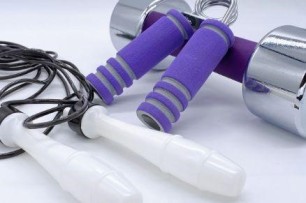
Let's understand the difference between strength training and weight training
If you have recently started your fitness journey or are planning to do it soon, you will come across words like “strength training” and “weight training”. But, what do these terms mean, and how much of it should you inculcate in your daily fitness regimen? More often, people primarily focus on weight loss or bodybuilding. However, an important thing to remember is to lose fat healthily. Overdoing your exercises and following unreasonable diets can have the opposite effect on your body.
This article will look at a few key differences between “weight training” and “strength training” to help you understand them better. Always remember to use weights under the guidance of a professional. Improper postures and overestimating your ability can lead to muscular and joint injuries. Let’s get started!
What is weight training?
Weight training indicates exercises that require the use of weights. Weights can be of various types; dumbbells, barbells, kettlebells, etc. Weight training is not limited to using gym equipment for your exercises. You can also make use of your body weight to practice weight training. Exercises such as push-ups, planks, and pull-ups are a few examples of using your body weight to see similar results to gym training.
Do not exert too much with excessive weights while doing weight training. Focus on how long it takes to fatigue your muscle with the most basic weight. Build your way up from there. Adding weights and gradually increasing the number of sets is a highly efficient way of building strength. If you experience pain while doing an exercise, it is best to leave that exercise. Take that up later with fewer weights.
Benefits of weight training:
● Increases strength of muscles and tissues
● Improves bone density
● Improves heart health
● It prevents aches in joints and back
● Aids in weight loss
● Defines and sculpts your body
What is strength training?
Strength training focuses on building strength and resistance. The basic purpose of doing strength training is to develop a strong core. It takes advantage of muscle contraction to build endurance and overall body strength. Strength training involves parts of weight training such as push-ups, lunges, etc. Equipment can vary from ropes and sleds to balance balls, and tyres. Strength training involves customised plans to stimulate and emphasise a particular area.
It is highly beneficial for people looking to improve their flexibility. Sportspersons undergo this training to enhance their skills and understand the chain of movement they will require in the game. Strength training plays a crucial role in helping people manoeuvre through these routines and gain optimal body functionality.
Benefits of strength training:
● Strengthens your body
● Boosts your metabolism
● Reduces fat
● Lowers risk of injury
● Helps in managing blood sugar levels
● Makes you more flexible
These are a few key differences between strength and weight training. One thing to remember while starting weight or strength training is to consult a trainer or a professional. Proper guidance is important for first-timers. Professionals can aid you in understanding the requirements of your body and customise a plan accordingly.
Irrespective of what kind of exercise you are doing, do not underestimate the power of a proper warm-up. Warm-ups prepare your muscles and tissues to prepare your body for an intense workout and decrease the chances of injuries. Putting in ten minutes of your time to do cardio or walking makes a good warm-up.
People join a gym or a yoga class to remain fit and healthy. However, investing in health insurance is another good habit of remaining aware of health. Health expenses can severely drain your finances, and reliable health insurance will help you avoid them. Take a step toward a healthier lifestyle and buy health insurance online in India. Enjoy the perks of purchasing a heal insurance policy online and get rewarded with an attractive premium.
Click HERE to find out how to buy health insurance online India.
Disclaimer: The information provided above is for illustrative purposes only. To get more details, please refer to policy wordings and prospectus before purchasing a policy.

Should you opt for a second-hand car insurance policy
Buying a second-hand car is a quick and easy way to get into the world of driving. Second-hand cars are a boon for families that dream of having their own car but find it difficult due to financial reasons. Research states that of the total car transactions made in India, around 55% are used cars purchases.
However, buying a used car doesn't mean you won't need insurance. Without insurance, you may find yourself paying even more for accidental damages and other repair or maintenance costs. You can save considerably on garage costs by investing in the right car insurance policy and capitalise on its benefits to gain healthy returns on your investment.
What is second-hand car insurance?
When you're buying a used car, the insurance history is essential — it shows you how much the owners took care of their vehicle and whether or not they were honest with their insurance claims.
After buying a used car, immediately call your insurance company. Registration is the first step in purchasing a vehicle. After you are registered, you have 14 days to transfer the insurance policy into your name.
Why is it essential to insure your second-hand car?
In India, car insurance is mandatory by law. However, third-party policies (also called liability car insurance) aren't sufficient to cover all damages. On the other hand, comprehensive policies provide more in-depth coverage.
As for your car insurance, choose a policy that includes comprehensive coverage. It will protect you against losses due to damages caused by human or natural calamities or the loss of your vehicle itself. Suppose a third party's death or injury occurs during an accident. In that case, their family will not be able to claim from you directly if you have paid the policy premium timely.
Pros of getting your second-hand car insured – The insurance policies cover you against the following problems:
• Natural disasters – Comprehensive car insurance covers your losses against damages caused by natural disasters like storms, floods, earthquakes, and other events beyond human control.
• Car accidents – Insurance protects you against the financial risks of injury or death due to car accidents, as well as damage or destruction of your vehicle.
• Robbery – As long as you have an accurate insured declared value, comprehensive car insurance will cover theft, vandalism, and other accidents resulting in total loss.
• Man-made catastrophes – You never know what could happen, but if someone else's actions cause your car to catch fire, you'll be covered. Likewise, artificial catastrophes such as vandalism, fire, self-ignition, and acts of terrorism will be covered under this policy.
Ignorance is never bliss when it comes to the safety of your car. In many cases, owners do not qualify for insurance claims due to a lack of awareness. Individuals must transfer the insurance policy to their name if buying or selling a second-hand car. The previous owner should also follow the procedure to ensure that legal problems don't arise in the future.
While owning an uninsured vehicle comes with several risks, one should also keep in mind that Indian law mandates that all vehicles must be covered under proper insurance.
Click HERE to know more about car insurance.
Disclaimer: The information provided above is for illustrative purposes only. To get more details, please refer to policy wordings and prospectus before purchasing a policy.
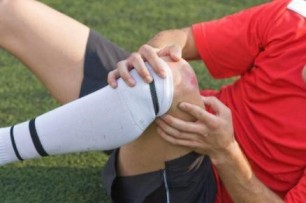
Let's understand a few common sports injuries and their effects
Sports are the preferred choice of physical activity by most people. It’s an exciting and fun way of incorporating physical activity into your routine. Spending at least half an hour a day playing can be magical for your mind and body. There is no better stress buster than playing your favourite sport.
If you are confused about where to start your fitness journey, playing a sport is a right start for you. However, are you worried about the many injuries that the sportspersons talk about? Fret not! We are here to clear the space of confusion and state all the facts and remedies before you.
This article talks about a few common sports injuries and their treatments for a faster and effortless healing process.
1. Sprains:
A tear or stretch in the ligaments caused is known as a sprain. As it can directly impact the movement of joints, even the menial tasks become highly painful. The most common are ankle sprain, wrist sprain, and knee sprain. Improper footing or a profound impact on different body parts can cause ligament tears or sprains.
Constant pain, swelling, redness, bruising, etc., are the general symptoms of a sprain. Sprains can typically take anywhere between a week to a month to heal fully. The easiest ways to fasten sprains' healing process are heat therapy, rest, and restricting movement.
2. Fractures:
Fractures are also a common injury that often occurs to sportspersons. Depending upon the severity of the injury, fractures typically take a month to six months to completely heal. Fractures can be cured using casts, padding, plasters, etc.
However, there are times when the doctor might suggest surgery to ensure that the bone fully grows back and is appropriately aligned. Misaligned bones can cause severe long-term implications if not fixed immediately.
3. Back and Shoulder injuries:
How often have we heard people complaining about their back giving them trouble? The spine is most susceptible to strain and stress during physical activity. Since your entire body frame is supported on your spine, giving extra care to your back is essential for staying fit.
Overlooking the stress on the back may lead to severe inflammation resulting in slip-discs and other back-related injuries. Treatments can vary depending upon the severity. Sometimes patients are recommended to take complete bed rest or undergo surgery.
4. Concussion:
In sports such as football and basketball, players can come across sudden high-impact injuries to the head. This traumatic injury can affect brain function. The symptoms can range from minor headaches, dizziness, drowsiness, and loss of consciousness.
Sometimes, these injuries do not show symptoms immediately and can take several months to manifest into other complications. Always consult a specialist to ensure that there are no severe injuries.
These were a list of the most common sports injuries prevalent amongst sportspersons. Remember to not over-exert the body whenever it shows signs of ache or strain. Sports and other physical activities are meant to be enjoyed while also helping you maintain an active lifestyle. But as the saying goes, "Excess of anything is harmful". Overdoing your practice can cause severe issues and aggravate the health of your body.
Always practice under the guidance of an instructor who can monitor your form and stamina. To safeguard yourself from the expensive treatments you might need during recovery, consider opting for the best personal accident policy in India. This way, you can rest assured that all your extra expenses are being taken care of. Never give up your spirit of playing a sport by surrendering to injuries. So, be cautious and continue passionately pursuing your favourite sport!
Click HERE to buy the best personal accident policy in India.
Disclaimer: The information provided above is for illustrative purposes only. To get more details, please refer to policy wordings and prospectus before purchasing a policy.

Six tips to have a better vision and healthy eyes
The world has gone digital, and given the current technologies coming in, there is absolutely no doubt that the digital era is here to stay. Everything in our work and personal lives is getting digitised by the moment. This indicates that our dependency on “screens” is going to rise. But how does that impact your vision?
Your eyes are your window to the world. It is one of the primary sensory organs which plays an integral role in your life. Unfortunately, the increase in the use of gadgets harms our vision. Your eyes are your window to the world. It is one of the primary sensory organs which plays an integral role in your life. Unfortunately, the increase in the use of gadgets harms our vision. Like a sound mind helps makes in a good body, healthy eyes sustain a healthy body.
But how to take care of your eyes in this world of soaring screen times? The following tips are beneficial for you to imbibe in your lifestyle to maintain a perfect 6/6 vision.
1. Your diet should be well-balanced:
The health of your eyes depends a lot on your food habits. The healthier food you consume, the better. Omega-3 fatty acids, lutein, zeaxanthin, zinc, and vitamins C and E enriched diet can fend off degenerative eye diseases like cataracts and Age-Related Macular degeneration (AMD). These nutritional constituents are necessary to maintain ocular surfaces. In addition, vitamin A for children is essential.
Make sure your diet contains the following foods:
• Fresh fruits and green leafy vegetables
• Berries
• In case you’re a non-vegetarian, then salmon, tuna, and other oily fish
• Lentils, eggs, beans
• Citrus fruits
• Seeds and nuts
2. Sun protection:
The ultraviolet rays from the sun have been proven to be harmful to the eyes. These rays can cause cataracts and Age-Related Macular degeneration (AMD), pterygia, and eye tumors. Avoid looking at the sun directly with naked eyes. Ensure that you wear the right sunglasses which protect you from UV-A and UV-B radiation.
3. Say no to smoking:
There’s no argument against the fact that smoking is bad for your health. It damages your respiratory systems and eventually deteriorates your whole body. There is sufficient data that proves that smoking increases the risk of AMD and cataracts exponentially. It also dries up your eyes, making it lose vision gradually.
4. Safety goggles:
To prevent any eye injuries, you must wear safety goggles whenever required. It doesn’t matter where you are; if your work deals with chemicals or airborne materials, you must ensure that you’re wearing your safety goggles. The same goes if you’re handling sensitive equipment or fireworks. Sports injuries can also cause eye damage. So you must wear a helmet and protective goggles.
5. Keep an eye on screen time:
Sitting in front of a screen can cause many eye issues, including headaches, strain, blurred vision, dryness, etc. Wear glasses or lenses, according to your power. Take breaks between your work. Increasing font size, adjusting the brightness, and lubricating eye drops are other ways to protect your eyes.
6. Regular checkups: Visit your eye doctor regularly for comprehensive examinations. If the doctor picks up anything during the checkup, you can eradicate the problem in the very early stages by proper treatment. This ensures that your eyes stay healthy in the long run.
Understand the vitality of having a good vision and healthy eyes before the situation slips out of hand. Follow the above tips and practice a few eye exercises to keep the blood flow constant in the eyes.
Now that we’ve discussed the tips to have better vision, another wise option to take care of your eyes and overall health is to buy health insurance, especially for the elderly of the family. So, browse through the several options and purchase health insurance in India for parents, which caters to their needs and enjoy life without any worries.
Click HERE to know more about health insurance in India for parents.
Disclaimer: The information provided above is for illustrative purposes only. To get more details, please refer to policy wordings and prospectus before purchasing a policy.

Essential post-workout tips for the fitness enthusiasts
Exercising is something that no one should ever compromise on. And if you are someone who religiously works out, you are already better than the sixty-four percent population of the country. But exercising is not any random daily task that you need to tick from your to-do list. It is a strict health practice that demands your time and dedication.
Exercise has stages that usually are overlooked. Ask any fitness enthusiast, and they will tell you pre-and post-workout care is as essential as the workout. The pre-workout phase includes a warm-up session. This is needed to warm up your body and get your muscles ready for a round of the extensive workout. Warm-ups before exercise avoid injuries that can later turn fatal. But, what do you do after your workout is done?
This article will take a detailed look at everything you can do post-workout to ensure optimum functionality and maximum results for your body.
1. Hydration:
Drinking too much water right after your workout is unsuitable for your body. Instead, it shocks the body with a sudden temperature change. Due to this sudden temperature change, the body uses energy to heat the water, which can slow down the rehydration process. Instead, take small sips after every set of exercises.
2. Stretching:
Stretching is an often-ignored part of workout routines. It takes barely 05-10 minutes. However, if you are running short on time, you can stretch on the go. You can easily do stretching such as lunge walking, overhead stretches, bicep stretches, side bends, etc., as you walk to the exit gates of the gym.
Stretching enhances flexibility and decreases muscle soreness after a high-intensity workout. If you miss out on stretches, it can lead to severe back pain and muscle soreness.
3. Restore your proteins:
Protein helps in muscle repair. You can obtain your daily protein intake from various sources such as eggs, curd, paneer, etc. Protein powders and supplements can be consumed as an add-on.
The amino acids in protein act as building blocks, essential for the repair and regeneration of muscles. Protein intake also helps with soreness that might follow the subsequent day after a heavy workout.
4. Include nutrient rich food:
Add a balanced and nutrient-rich meal to your post-workout diet for growth and recovery. Include foods with high content of vitamins, fibres, minerals, and carbohydrates for a well-rounded meal. For carbohydrates, you can opt for oats, rice, millets, etc.
Add spinach, beans, and cabbage for added fibre and nutrient content. Snacking on nuts is a smart way to ensure the intake of healthy fats, which are key ingredients to reducing inflammation.
5. Rest and Recovery:
If you practice heavy workouts, the general rule dictates that you should give your body a break of forty-eight hours weekly. Take the weekends off and indulge in light cardio such as walking, running, cycling, etc. Do not forget to add stretching to your rest days.
Our body is constantly communicating with us about what it needs. Listen to your body and take notice of the small changes that your body is responding to. Avoid straining if you feel like there is a possible chance of injury.
These are tips you can follow to ensure that your efforts and fitness enthusiasm do not go to waste. As mentioned above, overdoing exercises to the point of exhaustion can have severe implications. Always follow a routine under the guidance of a professional to avoid injuries and fatigue.
Remember that your body is unique and has requirements that are tailor-made for you. Sometimes, due to various reasons, our bodies are susceptible to injuries and accidents. Choose the best personal accident insurance to safeguard yourself and your loved ones in these situations. Don't allow injuries to stop you from hustling for a healthy lifestyle.
Click HERE to buy best personal accident insurance India.
Disclaimer: The information provided above is for illustrative purposes only. To get more details, please refer to policy wordings and prospectus before purchasing a policy.

Seven best gardening tips for beginners to have a perfect garden
The past couple of years saw an increasing trend of people inculcating gardening in their daily lives. As people were locked down as the pandemic peaked, having a little plant companion was the best way to stay cheerful during challenging times. Having greens around not only enhances the house's beauty but also purifies the air and supplies oxygen.
While taking care of plants might initially seem daunting, gardening can become therapeutic once you know all the little knick-knacks. Today we will look at the tips and tricks that will help you start your gardening journey.
1. Start small:
Setting up your garden need not be expensive. Use the take-out boxes and old paint boxes lying around your house to pot new plants. You can find the seeds/saplings and the soil at dirt-cheap prices in your nearby nursery. Or you can even use the seeds from the groceries in your very own kitchen.
2. Succulents:
They can survive extreme weather conditions and require almost zero maintenance. They only need direct sunlight for at least 3-4 hours a day and water once a week. Since they are used to surviving in low moisture conditions, you can breathe easy, knowing your plant won't die.
3. Own your kitchen garden:
Having a kitchen garden gives you the positive reinforcement you need. Plants like tomato, ginger, garlic, and gourds do not take up much of your time. You can invest in the soil and see the returns. Using your homegrown vegetables and herbs will be the best reward you deserve.
4. Prepare your compost:
All you need to do is separate your kitchen waste and put it into a pot explicitly kept for this purpose. Then, mix the waste and soil every once in a while to ensure the soil takes up all the nutrients from the waste. This way, you will have your compost ready! Mix this while preparing your pot for new plants.
6. Preventing insects and mealybugs:
As a beginner, you might face challenges while buying insecticides. Making your insecticide solution at home can be an option for you. Adding 3 ml shampoo to one litre of water in a spraying pump and spraying it under the leaves is an excellent way to get rid of mealybugs.
Using diluted rice water is also an effective solution to get rid of tiny insect infestation on your plants. These home remedies are more efficient and cost-effective than the other chemicals.
7. Tools for beginners:
Tools are used to toss the soil, remove weeds and cut out any infected leaf. These can be done with any readily available tools in our homes. But if you must invest in your gardening toolkit, then spades, gloves, and pruning scissors are required in the beginning. Later, you can add forked trowels, garden forks, etcetera, when you build your garden further.
Since most of us are beginners, we should be careful when dealing with soil and tools. Chances are we might be susceptible to infections and Paronychia. They are mostly treated at home, but at times you might need to get yourself proper medications for the same. Getting a personal accident insurance policy would help you rest assured in case of any such mishaps. Planting and gardening can add value to your life, and having a safety net in the form of personal accident insurance only adds value to your experiences. Here's to hoping that this list is just the right motivation to start your gardening journey.
For more details on personal accident insurance policy, click HERE .
Disclaimer: The information provided above is for illustrative purposes only. To get more details, please refer to policy wordings and prospectus before purchasing a policy.

Best tips to save money on your car loan
Most people think that buying a commodity like a car is a significant expense, especially if you have taken a loan. Understand that a loan is a liability, and if not managed properly, it could lead you to huge debts. Also, the maintenance and motor insurance can additionally cost more and affect your pockets.
Don't think that the market decides loan and interest rates, and you can do nothing to save the cost. In reality, the high-interest rate on the loan you borrowed affects your car loan. There are practical ways to save up on the loans of your car. Below is the guide to give you the best tips to save money on your car loan.
1. Constrain/control your credit:
Your credit history will directly affect the interest rate of the loan. If you have a low credit score, the lender may apply higher rates for your loan amount. Sort your credit report, and know that a good credit score will help you lock up the best deal on loans.
2. Navigate beyond the dealers:
Find ways to look beyond just one middleman/broker for your car loans. Getting advice or financing quotations from the dealer is not a bad option. But, when you shop for other things, do you stop at one halt and purchase? The answer is NO. So, do the same with your car loan options.
3. Buy an inexpensive car:
It does not sound like earnest advice, but at a point, it is proven logical. Getting a car is more about comfort and ease of life than merely a status symbol. Buy a reliable, best-fit vehicle that comes with lesser interest on the loan amount. Buying a car within your budget will also help you save up on motor insurance premiums.
4. Budget your down payment:
If possible, make sure to pay a substantial down payment on the purchase of the car. So, it will decrease the amount of interest on loans. Logically, the lower the principal amount, the lower the EMI will be.
5. Smaller tenure of the loan:
Opposite to the down payment, the tenure periods should be short. The lender will benefit from it if you have an extended tenure period. If you have a shorter tenure, you'll pay off the loan much faster. Also, interest components will be lower.
6. Count the processing fees:
The processing fee for the car loans is a one-time fee, and some banks waive off their prices during special occasions. So try to benefit from it by taking loans in that period. Also, make sure you don't get charged any extra in the name of processing fees, apart from general rates.
7. Go through the fine print:
One of the vital steps is to check all papers pertaining to the loan. Whether you take the quotation or make the final deal, read all the legal documents and understand them. Don't get trapped, and be conscious of the agreement while you are availing of a loan.
Stick to budgeting your loans. Be thoughtful with your financial position to consider the loan, interest, and ways to save up on your hard-earned money. There are ample ways to save the cost of your car loan payments. Don't rush the process and check every option before choosing the right one for your car. Like having good motor insurance comes with reasonable premium rates, a car loan can also be obtained with lower EMI if you make intelligent moves.
Are you looking for suitable motor insurance for your car? Click HERE .
Disclaimer: The information provided above is for illustrative purposes only. To get more details, please refer to policy wordings and prospectus before purchasing a policy.

Enjoy the mesmerising experience of watching fireflies near Mumbai
Did you know that fireflies glow in the dark to attract their mate and give out an honest evolutionary symbol that their babies are foul-tasting? Foul-tasting or not, these beetles have been attracting people for a long time.
People look up in fascination when these creatures dance in multitudes, trying to attract a partner from the opposite sex. So, whether you're trying to have a romantic getaway with your partner, trying to have a memorable trip with your family, or need some peace to meditate with nature, going to a place where you can see these stunning creatures at night is just the right vacation for you.
Back in our grandparent's stories, fireflies would be abundantly seen at the onset of every monsoon, busy attracting their mates. But due to the fairly recent change in the global climate, it's very rare to see this sight in cities. Here are 04 top destinations to see these mesmerising creatures.
1. Purushwadi:
Purushwadi is the most famous destination by far. It has been successfully holding a fireflies festival for many years. A tribal village situated about 200 km from Mumbai in the Western Ghats, one gets to experience the quaint village life along with the magic of the homestays and delicious food.
This has been made possible by local NGOs that work in rural tourism. It is a perfect getaway for city dwellers who want to experience peaceful rural life. It is easily accessible from Mumbai, taking about 05 hours by car.
2. Rajmachi:
As we welcome the season's first showers, one of the most exciting things this monsoon is to go on a night trek to Rajmachi fort. The Rajmachi Fort is about a 16 km trek from the Lonavala station, and you can spot fireflies after sunset.
The Shrivardhan and Manaranjan forts offer stunning views of the valley, making it a popular destination among trekkers. The surrounding Sahyadri ranges are perfect for spotting fireflies. Another brilliant spot for experiencing this is around the Udhewadi village.
3. Mulshi Lake:
At a small distance of 50 km from Mumbai, Mulshi is a beautiful village that boasts peace and serenity like nowhere else. Mulshi is a scenic beauty with a plethora of sights, like waterfalls, rugged cliffs, green forests, and meandering hiking paths.
In these emerald green forests is the firefly display around Mulshi lake. Spend overnight at the local homestay, experience the fireflies show, and explore the area at night.
4. Sandhan Valley:
Sandhan Valley is a stunning carved valley with a 200 feet drop in the Western Ghats. Known as the valley of shadows, it consists of a deep narrow, floored ravine between the two high walls of a mountain range.
The commuting route is practically the same as Purushwadi, but from Igatpuri, one must head towards Samrad village. To get a local flavour out of the trip, try to get a villager to accompany you on the trek and make simple arrangements with them for food. For a few years, villagers have been providing travellers with tents to see the fireflies.
This experience is sure to be a rewarding one for enthusiastic travellers. Seeing these bioluminescent creatures in their natural habitat will surely be a treat to the eyes, mind, and soul. These destinations are close to Mumbai and Pune, both bustling and hectic cities. It is best to drive up there or take a local train. The roads often leading to these destinations are narrow and rocky terrains.
If you are considering driving up there, you must look out for the rough patches. Before moving out on a trip, whether long or just a short one, always ensure that you carry all the car's documents. Seat belts must be on, and if driving at night, drive slowly! Also, get the best car insurance before starting a new driving exploration!
Click HERE to know more about car insurance policies in India.
Disclaimer: The information provided above is for illustrative purposes only. To get more details, please refer to policy wordings and prospectus before purchasing a policy.

Be adventure-ready and know these six tips before your next overlanding trip
Have you ever felt bored of your mundane daily routine and wanted a much-needed break? Overlanding helps you get away from all the stress of your work and refresh your mind and body, boosting the state of your mental health. It is a travel experience that focuses on a scenic destination away from the bustling city life. With this, you will get the chance to be closer to nature and give your body the rest it deserves.
Let's understand the tips that will make your overlanding trip memorable.
1. Plan well before you go:
You must decide on an adventurous overlanding route through the pleasant countryside and remote destinations. Do deep research about the destination, consider the weather predictions, and ensure favourable camping conditions. To avoid heavy traffic, accidents, or mishaps, you should know what particular amendments your car requires to suit the terrain.
2. Have basic survival skills:
Despite planning efficiently, mishaps occur, and you need to be prepared for any scenario. You might get minor scars or bruises while on the adventure, so carry a basic first aid kit to ensure you can treat minor wounds to avoid any infection. You might get stranded in an unfamiliar area, so it is always advisable to carry maps of surrounding regions in digital and physical forms. You should be capable of changing a tire in case of a flat tire. Adjust to the different weather conditions as your journey progresses.
3. Budget according to your needs:
Overlanding is a cost-effective travel experience. However, you might need to allocate your daily budget based on your needs. You can take inspiration from travel bloggers/vloggers and use similar tactics, or you can carry more resources to satisfy your needs. You should take into consideration your food, vehicle maintenance, and living expenses such as mobile connectivity. Save more by cooking food yourself and camping instead of staying in overpriced hotel rooms.
4. Comfortable dressing:
Wear clothes that are comfortable to be in for long durations. Pack appropriate attire for your activities and make sure it is compact. You can hand wash your clothes or use laundry rooms on your stops to clean and dry your clothes. It is also advisable to wear a roomy pair of good shoes that grip any terrain.
5. Carry essential equipment:
Carry equipment that protects you from excessive cold, wind, and rain, such as umbrellas, raincoats, jackets, gloves, and earmuffs. Emergency dry, nutritional snacks and bottled water should be a part of your travel inventory. Additional tools such as flashlights, fire extinguishers, and gas always make your trip must also be part of your travel checklist.
6. Take precautionary measures:
Safety is an aspect that you can never compromise with when planning an Overlanding trip, especially if you're travelling solo. During the journey, it's just your car and you who are for each other. So, keep spare wheels that fit your vehicle in case of a flat tyre. As roads are a package of undesired events, it is always advisable to get car insurance so that you return with good memories and no financial worries. Opt for online car insurance if you haven't bought one, hit that road less travelled and enjoy that overlanding adventure of a lifetime!
Overlanding journeys expose you to pure and unaltered experiences and introduce you to life in a way you might not have thought of. These trips also boost your self-growth as you learn to make arrangements to sustain yourself in any situation.
Click HERE to know more details about car insurance before you set on a trip.
Disclaimer: The information provided above is for illustrative purposes only. To get more details, please refer to policy wordings and prospectus before purchasing a policy.

Why is two-factor authentication important to assure additional safety
Two Factor Verification (2FA) is recognized by many names, such as two-step authentication, two-step verification, and even multi-factor authentication (MFA). In simple terms, to get access to an app, platform, or network, the end-users must ascertain their identities using two forms of IDs. One is their password, and the other factor can be anything, an OTP, biometric scan, a security question, etc.
2FA adds an extra degree of security by safeguarding user IDs and preventing cybercriminals from accessing online resources. Cyber attackers have to confront an additional barrier to access with 2FA in place. Even if hackers know a user's password, they must guess the second factor, which might be challenging based on the authentication factor allowed.
In today's post, we'll go over how this technology protects individuals and organisations from people with malicious intents out in this world headed for Metaverse.
1. Looking beyond passwords:
Generally, offices use single-factor authentication (username & password) to grant access to their services. However, these procedures are insufficient to protect users nowadays.
This is due to users often not adhering to best practices when setting a password. Although strong password rules may help companies reduce these habits, other offenses, such as writing down passwords, using the same passwords across various accounts, or discussing passwords with others, are common challenges at the workplace.
This is where 2FA comes in. It is tough to bypass a second authentication stage as it generally involves biometrics (which can't be faked), TOTPs (Time-bound and ever-changing), etc.
2. An efficient way to fight phish based attacks:
Phishing is a form of cyber assault in which people with malicious intentions send a bogus email that mines for sensitive data. It is one of the top web hazards confronting businesses today.
Phishing emails seem to be sent by respectable organisations and often invite people to log in to their social network, bank, or business accounts. Unfortunately, many consumers are duped by the nature of these emails and input their credentials, giving their passwords and access to sensitive information to hackers.
Let's say you have fallen for the phishing trap, and the hacker has your password. They will try to log in to your account and fail because the second layer of authentication will be waiting for them. One wrong attempt on the second stage will prompt you about a possible breach. You can immediately reset the passwords.
3. A single compromised account might be the tip of the iceberg:
If the same password or its variants are used for multiple accounts, the hacker may acquire access to all of them. Since a typical user handles over 80+ accounts on average, there's a potential risk the hacker will access other credentials. They may steal critical information from inside and even sell the hacked credentials.
If hackers manage to crack into your account and try to work their way to other accounts, they will not be able to get in.
In the future, companies plan to include Geolocation, device type, time of day to assist if a user should be authenticated or restricted. Furthermore, behavioural indicators can be discreetly tracked in real-time to enable continuous authentication. These are things for the future, though. Use the 2FA technology available to secure your online identity from hackers.
Another great weapon to add to your arsenal is public liability insurance. It covers you against identity theft, cyber extortion, unauthorised transactions, and numerous other cyber hazards. In today’s technologically equipped world, your life can be on a digital marketplace in just a few clicks, even ensuring system security is made easy online. Compare different public liability insurance prices and select a plan that matches your requirements without being too heavy on your pockets. Trust us; it is well worth it.
Consider checking the public liability insurance prices HERE.
Disclaimer: The information provided above is for illustrative purposes only. To get more details, please refer to policy wordings and prospectus before purchasing a policy.

Here are a few tips that you should know before you go for a two-wheeler test drive
Researching what type of bike to purchase and comparing its features is not enough; getting a test ride of your chosen model is equally important. It is a thumb rule not to buy a vehicle until you take a test ride. Test driving helps you to determine if the vehicle model is the right choice for you.
Getting reviews about a product is undoubtedly advantageous, but remember not to make up your final opinion solely based on that. Do not decide upon a model until you have tried the two-wheeler yourself.
Here are ten quick tips you should keep in mind while testing a two-wheeler that you are looking to buy:
1. A new bike will be in better condition than a test bike. Not all dealers make an effort to keep the test ride motorcycle in its excellent shape.
2. Make a mental note of where and what the controls are. Naturally, every bike has a different build and console. Therefore, before you hop on a vehicle, it is vital to know its layout. It is necessary to understand how the new bike will complement your daily commuting needs.
3. Pay attention to how the basic components impress you. That includes the comfort of its seat, clutch force, gear change efficiency, effortless braking, smooth acceleration, and overall performance.
4. Examine the effectiveness of brakes. But do not make a sudden emergency stop to do so. A modest stop or two will also give you a more precise idea of its capacity.
5. Instead of being influenced by the riders in advertisements, consider performance in the context of your daily travel. It is always a good idea to believe in your instincts and judgments rather than what others say.
6. The engine is the heart of any vehicle. It is crucial to verify engine performance thoroughly before making the final decision. Observe the bike's reaction to the throttle at a low speed in high gear and vice versa.
7. Don't forget to check its off-roading capability. Road conditions you cover regularly might not be as good as the ones near the showroom. Hence, ride through some unsophisticated paths to check for the sturdiness of the two-wheeler.
8. Look for ease of use as per your requirements. You cannot gain the confidence to handle a bike right away. Therefore, check to see if the bike's features respond to your expectations without any trouble.
9. Note down what doesn't please you. Then examine whether those things are changeable or replaceable.
10. Apart from examining the bike, ask these questions to your dealer; What does the warranty cover? What is the maintenance schedule for the motorcycle? What is the cost of essential services at the dealership? Is insurance covered, and what is the price of annual 2 wheeler insurance online?
Remember to be entirely sure about the bike before making a purchase. And If you're still indecisive, ask to take the two-wheeler for a second test ride or until you are confident. Once you've chosen to go from test riding to buying, be sure you have the right insurance coverage for riding your newly bought two-wheeler on the roads. Get Magma HDI's 2 wheeler insurance online with the additional benefits to give your two-wheeler lifelong protection.
Check out the best 2 wheeler insurance online HERE .
Disclaimer: The information provided above is for illustrative purposes only. To get more details, please refer to policy wordings and prospectus before purchasing a policy.

Try these seven tips to safeguard your devices from spammers and hackers
We utilise the internet in almost every aspect of our lives, looking for information, shopping, banking, online learning, playing games, and communicating with family and friends via social media. The data transferred over the internet could include banking and other financial records and medical information—all of which we desire to keep private. However, if the device is not protected, it may lead to malicious activities.
Hackers can access your most sensitive information with their vicious mindset. Consider purchasing a public liability insurance policy to protect the commercial business from various first and third-party liabilities. Here are seven suggestions to help you protect your office computers and other mobile devices from malicious intruders.
1. Antivirus:
Antivirus software protects your computer from malicious code or malware that could cause your operating system to malfunction. Get security solutions that support numerous technologies if your operating system didn't come pre-installed with it.
2. Use private Wi-Fi:
Avoid using public Wi-Fi on your device to prevent threat actors from gaining access to your device and downloading private files. Most public Wi-Fi hotspots don't encrypt data, so your connection to the Wi-Fi is visible to others. This poses a major threat to your device.
3. Complex password:
Obtaining a set of login and password combos from one source and trying those same combinations elsewhere is one of the easiest ways for hackers to get information. Therefore, the most important strategy to prevent network breaches is to use complex safe passwords.
4. Two-factor authentication:
Passwords are the first line of defense against cybercrime but adding a second layer of protection increases security. Many websites allow you to use two-factor authentication, which increases safety by asking you to verify your identity using at least two separate approaches.
5. Avoid spam mails:
Phishing attacks are when hackers send messages that appear to be authentic to deceive you into giving personal information. Always be wary of such emails from unknown senders, and never click on links or open attachments in them.
6. Substantiate app permission:
When you install an application, it will most likely ask for access to several of the device's most important features, including the camera, email, contact list, photo gallery, and location. If any of those features appear fishy, then disallow.
7. Be up-to-date:
Smartphone makers and app developers issue software updates regularly, which frequently contain security enhancements. So make sure your smartphone's software is up to date to avoid the risks of breaches.
You can protect your PCs and network from security breaches by using a combination of security technologies and best practices. The internet is a treasure trove of data and connections. If you use it with caution, you'll have a fantastic and safe time.
In today's dynamic business world, no matter how strong your corporate structure is, it is subject to a range of risks. As a result, it's a good idea to get public liability insurance policy to cover your needs and counter the damages caused by attacks due to vulnerabilities.
To look for the public liability insurance policy, click HERE!
Disclaimer: The information provided above is for illustrative purposes only. To get more details, please refer to policy wordings and prospectus before purchasing a policy.

Trendy international cuisines becoming famous in India
George Bernard Shaw had once said, "There is no love more sincere than the love of food". And for Indians, this relationship is above and beyond that. They don't just love food, they worship it. As the world is growing more connected, Indians have developed a unique relationship with international cuisine from across the globe.
To give your taste buds a chance, here is a list of trendy international cuisine famous in India that you shouldn't miss out on!
Italian cuisine – get obsessed with pasta and risotto:
Most Indians are already familiar with Italian recipes like pizza, pasta, or risotto. Indians can't go days without eating a pizza which is almost like their comfort food. Some are seeing this paradigm already shifting; imagine restaurants are experimenting with tandoori pizza! Besides pizza, people are even hyped up about pasta and lasagne.
Korean cuisine – spice things up:
Koreans have our hearts. From their music to food, everything about their culture is impeccable. Korean cuisine mainly consists of rice, seafood, and vegetables. Some of the top Korean cuisines that should be on your menu include Kimchi, Bulgogi, Korean fried chicken, and Red rice cakes, also known as Tteok-bokki.
Japanese cuisine – feel the magic of the sea:
People in India are crazy for spices and flavours, but they would never think twice when it comes to Sushi. This delicious combination of both fish and rice with some special sauce is becoming a favourite among modern dinners. If you are a fan of exotic vegetarian dishes with noodles, you won't miss out on some of the Japanese restaurants in India.
English breakfast and high tea – a western culinary influence:
Like a favourite story, who knew Indians would always love something from the UK so much. Tea is India's most beloved beverage, which has become a tradition as an evening high-tea in fine-dining restaurants. Pancakes are another delicacy ruling over everyone's heart that now Indians are shifting from idli-dosa to pancakes for breakfast.
Thai cuisine – taste happiness:
Thai food is one of the few global cuisines that Indians genuinely love. Thai food is a mixture of so many ingredients altogether, and Indians love all the hidden flavours and aromatic elements of it. Today, Thai curry has become a part of most Indians' kitchens.
American cuisine – a heavenly delight:
And always keep the best for the last. Indians have loved American cuisine for years now. With numerous American fast-food chains opening their outlets all over the country, American food culture has gained popularity among both young and adults. Chicken wings, tacos, steaks, and salads are the new favourites today. Almost everyone's go-to food is now cheeseburgers and sandwiches.
Food is perhaps India's biggest obsession today. If you are a foodie and looking for some famous cuisines, there are endless options you can find. You can even participate in several International Food Festivals to delight yourselves with the best food from around the world. But, also remember that having a well-balanced food with appropriate calories and enough nutrition is a key requirement for good health. A growing number of restaurants, health consultants, fitness experts and online health insurance advisers recommend food as prevention-based medicine.
Having a sensible approach towards your choice of food can help you with improving health outcomes or driving down healthcare costs and online health insurance premiums. So, next time, incentivize your better decision-making with those exotic and international food menus as a way to improve your health too!
Click HERE to know more about online health insurance plans for you and your family.
Disclaimer: The information provided above is for illustrative purposes only. To get more details, please refer to policy wordings and prospectus before purchasing a policy.
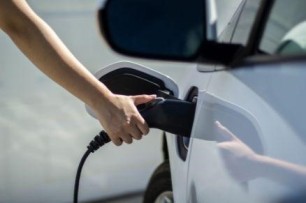
Best tips to keep your electric car safe during monsoon
Monsoon is finally here! From the cooling showers to the irresistible scent of the soil after rain, there is much to be excited about the monsoon. But with all this beauty comes the problems of sludgy, slippery roads that make for a great inconvenience. With heavy rains comes damage to vehicles, which is seemingly unavoidable.
With petrol prices seeing a significant hike, more and more people are shifting their focus on owning an electric car. While there are many advantages to owning an electric vehicle, it comes with its own set of problems— one being that it is more susceptible to damages caused by rainy weather.
This blog gives you some helpful tips to keep your electric car safe and avoid spending hefty money repairing it.
1. OEM-issued charger:
Safe charging should be your top priority as an electric car owner. Verify that your charger is original. Original chargers ensure the car charges efficiently.
Current surges are common during heavy downpours, which can result in serious damage to the car's batteries. It can cause short-circuiting in the vehicle's charging point and cause internal damage to the wiring. The best way to prevent this is by charging the car in a dry and covered place, like an underground parking lot or a shed. Care should be taken to ensure that the charger is dry. Also, avoid charging the car in extreme weather conditions like lightning, cyclones, and thunderstorms.
2. Use ancillary components to help:
Using the features such as windscreen wipers, defoggers, and air conditioners to dry the car is a great idea to prevent the vehicle from corroding and rusting in this moist weather.
3. Don't forget the interiors:
The interior takes the worst hit in the monsoon. Muddy shoes and wet clothes are a frequent occurrence. From fungal blooms to a stench that will not go away no matter what you do. So, it's an ordeal to clean the inside of a car very often. Prevention is much better than cure in this case.
Use plenty of newspapers and towels to help soak up the water. Keep the windows rolled up and let the wet areas and the moisture dry up. If that doesn't work, you can also use a hair dryer on the wet spots. Don't forget to keep the cabins dry and clean.
4. Keeping the exterior (non-electrical parts) clean:
The car's exterior is constantly exposed to harsh weather conditions, and this problem gets aggravated in rainy weather. Especially in metros, the additional problem of acid rain comes in. This rain is corrosive and can strip your car of its protective paint. Be extra cautious during the monsoon, and wash your car regularly to prevent the paint from rusting.
Electric cars are quickly replacing petrol cars as an environment-friendly alternative. This is due to various reasons such as low running cost, lower maintenance, high acceleration, and most importantly, the near-zero carbon emissions they produce to help you reduce your carbon footprint.
However, it has its cons. The rechargeable battery is costly, and very few mechanics will be well-versed in fixing defects in an electric car. These are the reasons why researching the best car insurance in India will be the best option to avoid venting your finances during unforeseen circumstances. Implement the above tips and get ready to enjoy the best of monsoon by taking a road trip in your electric car.
Click HERE to know more about car insurance India.
Disclaimer: The information provided above is for illustrative purposes only. To get more details, please refer to policy wordings and prospectus before purchasing a policy.

Here is a list of the top seven national parks in India to visit for your next wildlife retreat
Sometimes, all we need to cool off and get the synchronization between our mind and body right is a break from the fast-paced city life. Moreover, we need some peaceful time-off to breathe and grasp the gravity of our existence. And nothing is better than being surrounded by nature to savour all that it has to offer.
A wildlife retreat is a fantastic opportunity to get yourself that peace and reconnect with your family while enjoying the charm of nature. India has abundant national parks and sanctuaries to offer a city escape to nature lovers. Let’s discuss some of the best national parks which provide an ideal space for a wildlife retreat.
1. Ranthambore National Park, Rajasthan:
Comprising a distinctive ecosystem, this national park is home to several tigers that one can easily spot on the safari. It is one of the significant reasons why tourism at Ranthambore has observed colossal growth. You can choose your accommodation from a list of options which ranges from luxury tents to boutique hotels.
2. Jim Corbett National Park, Uttarakhand:
Luring in the most visitors every year and famous for its Bengal tigers, Jim Corbett National Park has seen significant development in its tourism by opening up numerous lodges, hotels, resorts, etc. As a result, this national park is one of the top destinations for budget travellers every year.
3. Kanha National Park, Madhya Pradesh:
Situated in the heart of India, this tiger reserve has dense wildlife (swamp deer, India tiger, and much more), which one can explore on a jungle safari. Plus, you have the benefit of choosing from several staying options- luxury tents and hotels to budget resorts, all designed for your comfort.
4. Kaziranga National Park, Assam:
Carrying the baton for the most famous national park in Northeast India, Kaziranga houses the prestigious one-horned rhinoceros. Developing interest in northeastern tourism has expanded staying options in this area. Several luxury resorts and budget hotels with all the amenities are ready for tourists and travellers.
5. Sunderban National Park, West Bengal:
This national park, along with tigers, is also famous for its single block of tidal halophytic mangrove forest, the largest one in the world. As a result, it gains much traction from adventurers and wildlife lovers across the country. The mystical mangroves add to the incredible experience of staying in the lap of nature.
6. Gir National Park, Gujarat:
Home to the Asiatic lions, world-renowned Gir National Park is rich in flora and fauna. Therefore, making the stay here a perfect opportunity to explore the wildlife while enjoying your retreat. Moreover, it provides many luxurious and budget-friendly accommodation choices, convenient for tourists and nature enthusiasts.
7. Bharatpur Bird Sanctuary, Rajasthan:
Otherwise known as Keoladeo National Park, this bird sanctuary offers the perfect opportunity for birdwatching holidays in India. Adding to this absolute blissful getaway experience are the accommodation options of heritage hotels and jungle lodges.
When the stressful and noisy city life takes a toll on your happiness, it's the time that you pause and spend some time in serenity. If you are a true admirer of nature, the above-listed places are ideal for experiencing a natural delight and unwinding in the wildlife retreat. So, plan your trip to these bewildering national parks and escape into the wilderness. But, while making travel plans, you need to ensure that your journey stays free from any potential travel risks. Safeguard your travel dreams with the benefits of a comprehensive travel insurance plan from the best general insurance company.
Click HERE to know more about general insurance company.
Disclaimer: The information provided above is for illustrative purposes only. To get more details, please refer to policy wordings and prospectus before purchasing a policy.

Twelve tips for the new parents to upbring their little ones in the best way
Being a parent is always a testing situation and becoming one during COVID-19 adds to the many new challenges. The pandemic means significant changes for newly become parents. Keeping the kids confined in the house leaves an impact on their overall development. Here we look at how new parents can navigate this difficult time and upbring their little ones as a gift for entering parenthood.
1. To encourage trust-building, expose your child to physical presence and emotional connection with you and your family.
2. Imitating facial and other expressions is a natural act of every infant. Therefore, smiling, sticking out the tongue, and hands movement are good ways for your child to study and follow you. These innocent gestures will assist you in finding out what they need and even how they feel before they have the words to say it.
3. Allow them to have physical movements on their own. A significant part of a child's overall growth relies on how much they move. Hence, let them indulge in activities like walking, running, dancing. In addition, motivate them to play outdoor sports to stay active and fit.
4. Never leave a baby unattended and ensure a high level of safety with a baby-proofing setting done for the house.
5. Pose basic questions to your toddler and correspond to their attempts to communicate.
6. Allow your child to select an activity where you can spend quality time together, avoiding disturbance and making it your daily favourite time with them.
7. Allow them to speak out their tantrums. Encourage them to be more vocal towards the people they trust.
8. Engage them in activities and games from which they can learn, for example, shapes, colours, numbers, alphabets. If learning is made fun during the first years of children, they grow healthy.
9. Read aloud stories together and ask questions about what they observe in the stories. This cultivates interest in your children and makes them feel curious about new things with deeper perspectives.
10. Applaud for their help. Let your kid know your feelings when you see them doing house chores.
11. Find ways to share with them why moral values are significant in life. For example, make them understand the importance of helping others and doing their work with loyalty and dedication.
12. Last but not least, try to be your child’s best friend first and live the moments. They always look for a friend in their parents. Be the one!
Raising a child is something that no one can prepare us for. Just like your newborn, you too will learn as you go. The initial years with your child will take up most of your time and even leave you exhausted, but this is the best opportunity to cherish a beautiful bond with them.
Every parent has ongoing concerns regarding the growth and safety of their kids. Lay the foundation of a healthier tomorrow for your little ones by investing in the best health insurance in India for parents that covers your as well as your child’s health. Kids receive health insurance benefits from the family floater plans until they turn major.
Click HERE to know more about the best health insurance in India for parents.
Disclaimer: The information provided above is for illustrative purposes only. To get more details, please refer to policy wordings and prospectus before purchasing a policy.
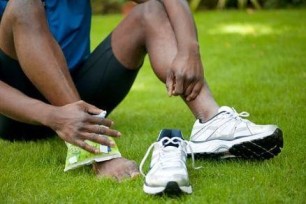
Here are a few effective ways to heal injuries faster
In traversing through a fast-paced life, accidents are bound to occur. You might skip a step while rushing down to get your cab or cut your finger while chopping up vegetables, or simply fall and injure yourself while playing your favourite sport. Ideally, we would all want to lead a life without injuries and worry about medicines and post-care. But as someone has rightly said, "Falling is part of life, getting up is living." So, we're here to help you heal your injuries without burning a hole in your pocket.
Medical care costs are skyrocketing, and it is always the best option to get individual personal accident insurance to ensure the best coverage for severe injuries. But, for instant relief from minor injuries, you may focus on aiding the process of recovery and healing yourself faster. So, let's look into it to make our healing process quicker.
1. RICE:
RICE is an acronym for REST, ICE, COMPRESSION, ELEVATION. It is used for mild sports injuries. As the names suggest, one should give ample rest to the affected area, keep applying ice packs, and use a medical bandage for compression. Keeping the affected area elevated above the heart's level is suggested to reduce pain and swelling.
2. Eat the right food:
Certain food items possess the ability to catalyze the healing process. For example, protein-rich food like eggs, meat, cottage cheese, and citrus fruits like oranges have anti-inflammatory properties and help build ruptured tissues.
3. Wash the affected area:
In case of open injuries, washing the wound with clean water and cleaning the area with saline solutions is suggested to avoid the accumulation of bacteria.
4. Anti-bacterial ointment can do wonders:
Getting the wound examined by the doctor and applying a prescribed ointment to open wounds is highly suggested as it prevents infections and helps in faster healing.
5. Turmeric paste:
This golden formula from grandma's corner is a no-fail solution to any wound. Turmeric has anti-bacterial, anti-fungal, and anti-inflammatory properties. In addition, the curcumin present stimulates growth and helps faster restoration of the wounded area.
6. Apply pressure in case of blood loss:
It is suggested that in case of blood loss, one should maintain pressure in the affected area to avoid anaemia and ensure a faster recovery. Excessive blood loss can be a life-threatening condition. If the bleeding persists, one should see a doctor at the earliest.
7. Stitches or staples:
If the wounds are deep, it is essential to go to the doctor and get stitches or staples. Leaving them open for a prolonged time may hinder the growth of new blood vessels and prevent the wound from closing. While these procedures can be expensive, you can rest easy if covered by individual personal accident insurance.
So these are a few ways that can help you in your journey to healing yourself faster and getting back in the game. Your body is a temple, and giving it proper rest and care after injuries will help you regain your former strength sooner than you think. It is always suggested that you go to a doctor and get your injuries examined, but these remedies can help if they aren't significant.
Click HERE to get details about the different individual personal accident insurances.
Disclaimer: The information provided above is for illustrative purposes only. To get more details, please refer to policy wordings and prospectus before purchasing a policy.

The best reasons to opt for sports bikes for touring and adventure
A sports bike provides riders with an exhilarating and adventurous experience. Several high-quality sporty bikes have recently entered the market, each with its own unique set of features. In addition, sports bikes have a more upright riding position, long travel suspension, and bigger tank capacity.
Long travel suspension contributes to optimal ground clearance, allowing smoother driving over rugged terrain, which makes it possible for motorcyclists to travel into distant locations with ease. Potholes and roadblocks are no match for their speed and agility.
The following are the ultimate five reasons you should ride a sportbike for touring.
1. Customisation:
A sports bike is more convenient than a regular bike when it comes to touring. Buyers can improve the quality and crash safety of their bikes with the help of after-sale services. Every accessory is protected against rain, snow, and hail with an all-weather coating for added durability.
Helmets and riding clothes can be made just for you. It assists you in planning your outfits for road trips and prepares you for outdoor adventures. By your requirements and the location of the destination, you can select from a variety of tire options available in the market.
2. Enhanced convenience:
Seating comfort is crucial for every motorcycle rider, and many sports bikes offer it. In addition to traction control, an anti-lock braking system and several temperature riding modes make sports bikes equipped with exclusive features that assure riders' convenience. Furthermore, it provides several other technologies that make riding a motorcycle safe and enjoyable for long journeys.
The bikes are developed with practical features such as cruise control and heated seats for added comfort.
3. Serviceability and dependability:
Sportbikes are relatively simple to maintain and repair. The reduced bodywork makes routine maintenance, inspections, engine cleaning, and other vital components easier.
Because these bikes are engineered to withstand gruelling conditions for an extended time, their parts and materials are overbuilt for most types of travel. More than any other bike, their durability quotient is high. They are more powerful and torquey in technology, with designs that are fashionable.
4. Touring experience:
Touring is about more than just your vehicle. It is also essential to have a positive experience. You will undoubtedly meet and engage with other riders. Also, sports bikes have a reputation for igniting conversation with curious locals about your origins and destination.
You get to participate in many chats that will leave you with a slew of pleasant memories. A growing number of individuals are developing an interest in sports bikes. Keep an eye out for activities in your area, and don't be hesitant to drop over with your camping gear if you see one.
5. Greater fuel storage capacity:
It is common for sports bikes to have a bigger tank capacity, between 13 and 20 litres. A larger tank equates to a more excellent range of operation. In addition, it eliminates the need for numerous stops for refuelling when travelling long distances. The fact that petrol stations are far and few when you are travelling makes this feature all the more crucial for your trip!
In a nutshell, sports bikes make it possible to cover vast distances with ease, unmatched speed, and durability. It is well worth purchasing for any lengthy journey because of its design and comfort. Feel the seamless power of the engine revving your heart and exciting the rider in you.
If you have a passion for travelling on two wheels, then a sportbike can help you live your passion to the fullest. However, apart from the fun, you need to prioritise your safety while riding such powerful machines. Ride with proper safety gear and invest in 2 wheeler insurance to safeguard your finances against any damages.
Click HERE to purchase the best 2 wheeler insurance for your sports bike.
Disclaimer: The information provided above is for illustrative purposes only. To get more details, please refer to policy wordings and prospectus before purchasing a policy.

Practicing farming can have a positive impact on your life. Know how
India is an agricultural-based country, where farmers and farming have an exponential impact on the whole country. The concept of farming should not just be confined to the villages or rural areas. Rather than perceiving it as a profession, it should be practiced as a hobby that can offer several valuable experiences.
Have you thought of maintaining your own farm? This thought might have crossed your mind at least once, but you might be wondering how farming can be helpful to you. It might sound surprising to most city dwellers, but yes, farming in your backyard, lawn, or terrace can positively impact our lives. Let's know-how.
1. Creates multiple opportunities:
The farming sector is booming with many promising job opportunities. The growing demand for education and significant research in the farming sector brings many new opportunities, such as farms, nurseries, and hatcheries.
2. Maintain the economy:
The increasing population can meet the rising job opportunities in the farming sector. This ensures that the demand and supply balance is maintained. As a result, the prices of food and other products stay level for the consumers.
3. Teaches emotional investment:
Growing a crop is what nurturing a child feels like. You sow the seeds at the earliest stage and make sure they grow properly. You provide all the other nutrients and protect the seeds and saplings against harsh wind, heavy rain, and excessive sunlight. You choose suitable pesticides to ensure that the bugs and other insects don't destroy your crops. The whole cultivation process requires a lot of capital, physical labour, and emotional investment. Patience plays a huge role here. Understanding how emotions develop throughout the entire growth helps in the long run.
4. Medicinal purposes:
Many crops and plants act as medicines rich in various nutrients and minerals. Several medical practitioners advise their patients to consume the processed version of these plants (or even raw) to treat nausea, morning sickness during pregnancy, kidney stones, etc. Many of these crops are cultivated to feed the cattle and livestock and get the best quality of dairy products.
5. Saves water and soil:
The roots of the crops hold the soil tightly, thus avoiding soil erosion due to severe climatic factors like heavy rain or wind. This helps keep the nutritional value of the top layer of the soil, which is essential for the growth of plants. Practicing farming also helps avoid the drainage of toxic chemicals into the rivers or seepage into the water table.
4. Self-assurance:
It will help if you build a strong anti-nausea mindset. Keep reciting to yourself that you will not feel sick or nauseous. This prepares your brain to think flying is normal and there is no need to fear. You will gain confidence and reassure your body to stay calm, especially during stressful moments. Ask a friend or travel companion to help you when you feel nauseous.
6. Sustainability:
Farming crops that provide biodegradable products like cotton, paper, wool, etc., contribute immensely to sustainability. Due to the excessive pollution and increased usage of non-biodegradable products, there is a massive negative impact on the climatic conditions. Sustainability is a huge influencing factor in saving our planet against significant issues like global warming and climate change.
Those were some of the pointers on how practicing farming can significantly impact your life. Farming connects you directly to the soil, and the moment you feel the soil, you reap good outcomes. This sublime connection will leave a positive impression and bring out the best version of yourself.
Your contribution through farming does not mean just growing crops. It highlights your contribution to boosting the economy, promoting sustainability, and encouraging healthy living. Farming enables access to a variety of healthy food products, which help in building strength and immunity in people of all age groups. And with global health standards getting a massive blow, it becomes more important to address health issues with seriousness.
Just like you protect your precious crops from getting damaged by using the right pesticides, it is vital to safeguard your and your loved one's health. You can accomplish this by purchasing the best health insurance policy. Make a hassle-free purchase and buy health insurance online to benefit yourself with the best premium and returns on investment.
Click HERE to know more about how you can buy health insurance online.
Disclaimer: The information provided above is for illustrative purposes only. To get more details, please refer to policy wordings and prospectus before purchasing a policy.
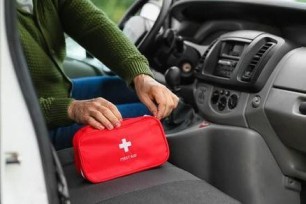
Why a first-aid kit in your vehicle is an excellent step towards safety
Justifying the name, first-aid kit is the immediate response of medication at the time of emergency. Those initial moments can help prevent an injury from getting critical during an accident and can potentially save the life of someone on the road.
A first-aid kit in the car is essential for many situations that don't require the help of a medical professional. Most of us spend our time travelling, either for work, holiday, shopping or long drives during weekends. Unfortunately, with roads becoming more prone to accidents, the probabilities of mishappening are common.
In such situations, having a first-aid kit in your vehicle enables you to avoid severe complications until help reaches you. For the minor injuries, a first-aid kit will be a saviour to cure cuts, scratches, and other minor wounds.
The advantages include:
• Helps prevent injuries from getting worse: It is crucial to address the minor cuts or wounds developed after accidents before they turn septic. Leaving the wounds open will invite infections, and in no time, you will start feeling weak. Avoiding such situations by using first-aid is the best thing to do. Soak the cotton with antiseptic liquid and gently apply it over your wounds or scars and clean the area thoroughly. Later, use bandages to cover the wounds and let them heal at their own pace.
• The belief of being safe: Having a safety kit in the car will give you the mental satisfaction of having resources ready in case of emergencies. It makes you feel prepared to take good care of yourself even when driving solo. Another add-on to this belief is valid car insurance, which provides financial protection against any eventuality.
• Be the saviour in the crowd: If you ever witness any severe accident, having a first-aid kit will make you the first responder. You can treat and bandage the wounds to prevent excessive blood loss that can deteriorate the injured person’s health. Remember, your alertness and courage can save a life.
Must-haves in your first-aid kit:
A first-aid kit is a personal resource for emergencies, and everyone may keep them equipped with the accessories they think they may need. However, here is a checklist of some essential items that should be in your vehicle's first-aid kit.
• Cotton (swaps) and bandages
• Basic antibiotics, antibiotic cream and pain relief spray
• Hand sanitizer
• Antiseptic wipes and antiseptic liquid
• Safety pins, scissors and a tweezer
• Gloves
• Rehydration sachets
• Torch with extra batteries
• A thermometer
You must check these necessities before you pack your vehicle's first-aid kit. Additionally, ensure that you keep a list of contact numbers (family, friends, doctor, etc.) so that in case of any severe injuries, someone can reach out to your close ones and inform them about the event.
Preparedness can prevent unexpected situations from getting worse for you. Whether you are travelling alone or travelling with your friends or family, you shouldn't compromise safety. The earlier you understand the importance of having a first-aid kit in your vehicle, the better it’ll be for you.
In addition to it, for the safety of your car during mishaps, consider getting car insurance. Although having car insurance cannot prevent accidents, it can assure financial security during emergencies. As it is rightly said, "It's better to be safe than sorry". With these small precautionary measures, you can keep big troubles out of your way. So, travel safe, travel responsibly!
Click HERE to get the best insurance for your car.
Disclaimer: The information provided above is for illustrative purposes only. To get more details, please refer to policy wordings and prospectus before purchasing a policy.

Here are a few options to help you plan your budget-friendly destination wedding
In recent years, destination weddings have received increasing attention. Finding the right location to tie the knot on one of the most important days of your life is an indescribable sensation. However, these magnificent locations often drain a large portion of your funds. They may even surprise you by exceeding your wedding budget. But don't allow money to stand in the way of the total delight of tying the knot against a magnificent background that will make your wedding appear nothing short of a fantasy.
To add to this thrill without dimming your spirits with exorbitant venue expenses, we have unveiled a list of a few ideal locations. These places will make your exquisite vacation wedding planning a reality while staying on a budget!
1. Royal Jodhpur:
Jodhpur is a royal venue for you to have your destination wedding on a budget. The beautiful palaces, heritage hotels, and havelis offer you options of Royal Marwar tradition with gorgeous royal arches, domes, and wide-open courtyards. The historic buildings combined with contemporary comfort will make your wedding a day to remember. Book a multi-faceted facility with a heritage palace and a royal set-up that will provide a stunning wedding experience for your special day.
2. The Andaman and Nicobar Islands:
Imagine getting married while standing amidst an island resort with a view of the infinite ocean in front of you. It will be beyond lovely, with the waves pounding on the beach and the peaceful humming of the ocean. Your attendees will have a fantastic holiday due to your wedding and cherish every single second of it as a majestic memory to rejoice.
3. Tijara Fort, Neemrana:
Imagine getting married in a historic castle and experiencing being a royal couple. Tijara Fort is the place to go. It is perched on a high mountain with a breathtaking outlook and serenity encompassing its boundaries. It also provides a peaceful and tranquil area with a view of the mustard fields, making this destination all the more special.
4. Mussoorie:
Mussoorie is excellent for arranging a getaway wedding while staying within your budget. It is the ideal location, with a beautiful atmosphere, hypnotic mountains making a stunning background, and an abundance of flora adding to the aesthetic appeal. It also provides a wealth of facilities that will make your momentous day to cherish.
5. Jim Corbett Park:
This is recognised as one of the most aesthetically pleasing destinations in India. Surrounded by the beautiful woods and jungle, this popular tourist destination is ideal for hosting all types of wedding festivities, from pre to post-wedding. Make them stand out and distinctive, making your fantasy come true in Jim Corbett.
Over the years, the concept of big fat Indian weddings has been trending. Many couples prefer to spend extravagantly on a wedding ceremony than invest in their future planning. However, budgeting has to be beneficial in every way; for your wedding event and hereafter life. Discover the significant benefits of insurance and buy insurance policy online that suits you before starting the new phase of your life.
Click HERE to buy insurance policy online.
Disclaimer: The information provided above is for illustrative purposes only. To get more details, please refer to policy wordings and prospectus before purchasing a policy.

Best tips to help with nausea while flying
Have you ever felt nauseous and woozy during your flight’s take-off, landing, or while you are up in the air? Or have you felt an aversion to food or beverages during your air journey? If you nod your head in agreement, this condition is called motion sickness. It is a common issue among both frequent travellers and non-travellers.
Dealing with motion sickness becomes challenging for people who travel long distances or have longer durations of flights. They start feeling dizzy and tend to throw up even at the chance of slight turbulence. People with motion sickness issues experience a high level of discomfort, which makes their whole journey experience terrible to put up with.
Travelling while feeling nauseous the whole time is a nightmare. It can also be triggered by anxiety, stress, and panic. And it is very much possible to continue feeling nauseous and sick even hours after your flight. Some symptoms of motion sickness include headaches, nausea, anxiety, palm and forehead sweats, dizziness, fatigue, etc.
This blog will discuss the best tips to help with nausea or any stress during your flight.
1. Book your seat:
Make sure that you pick the right seat while booking your flight tickets. It would be great to select the seats in a stable zone and less prone to turbulence. So, the front wing of the plane is the best option for you not to feel nauseated.
2. Say no to books:
Experts suggest against reading on a plane if you experience nausea whenever you fly. To avoid feeling sick, you need to maintain equilibrium and focus on a horizontal and stable seating position. But while reading, you squint and expand your eyes to read small letters, which ruin your concentration and equilibrium.
3. Eat travel-friendly food:
Monitor the type of food you eat before you board the plane. Avoid having oily and heavy food as it will be difficult for you to digest without any movement. An excessively filled stomach can make you nauseous. Avoid salty food items that trigger dehydration. Drink lots of water to stay hydrated when high in the sky and in drier air.
4. Self-assurance:
It will help if you build a strong anti-nausea mindset. Keep reciting to yourself that you will not feel sick or nauseous. This prepares your brain to think flying is normal and there is no need to fear. You will gain confidence and reassure your body to stay calm, especially during stressful moments. Ask a friend or travel companion to help you when you feel nauseous.
Some other ways to control your nausea are by packing some medicine that aggravates sleep, drinking some ginger ale, acupressure, etc.
We hope that you found this helpful information. While we discussed the best tips to help with nausea during flight, you need to be attentive regarding your health status as well. There is no telling when you might face health distress. To make things easier in such panic health emergencies, you can rely on health insurance.
Start with your research and list all the affordable health insurance plans. Opt for the one which balances all your expectations. It is always a good idea to have a check on your safety measures before flying off or starting a trip.
Click HERE to know more about affordable health insurance plans
Disclaimer: The information provided above is for illustrative purposes only. To get more details, please refer to policy wordings and prospectus before purchasing a policy.

Complete guide to taking cross country trips
Road trips with your closest friends promise many fun memories and thrilling experiences. But have you thought of taking a cross-country road trip with your travel friends? Cross-country road trips are a fun way to explore the country's diverse and local landscapes. It also leaves space for new additions to the itinerary as you can make pit stops whenever you want to and travel at your own pace.
Planning a cross-country trip involves lots of thought and readiness in all aspects. Physical and mental preparedness is paramount when deciding to plan such extensive journeys. From budgeting to making the itinerary and ensuring the excellent condition of your bike to taking care of your health, the complete road map of your trip should be ready in advance.
In this article, we will take note of a few things to keep in mind before you take that much-awaited road trip with your friends on your bike.
1. Calculate the duration of your trip:
It is essential to calculate how much time you will need to spend on the road to the chosen destination. Depending upon the duration, you will have to decide the number of pit stops you will take and the lodging facility if you plan on halting for the night. Driving non-stop can be tiring, so chalking out the timelines for driving and resting would be an excellent way to give your body some rest.
2. Choose your stops before beginning the trip:
Doing thorough research on the entire route and marking important places to visit is an intelligent way to undertake long road trips. While choosing the places of significance, note other important things such as fuel pumps, public toilets, hygienic restaurants, etc.
3. Booking and lodging:
Booking your lodging well in advance can help you avoid the last-minute panic of finding a place to find good shelter. If you are working with a flexible schedule, look for options on the go. This will give you space for exploring newer routes, and you might stumble upon some hidden gems on the way.
4. Packing and checklist:
It is best to pack light while travelling on a two-wheeler. Since the weather can be pretty unpredictable, choosing bags with rain covers is a clever idea. Add first aid, emergency medicines, sunscreen, and snacks to your travel kit.
Another way to avoid bulky packing is to opt for vacuum packing. Vacuum packing helps in the compression of all your clothes and other essentials. This way, you save space and cut down on the number of bags you need to carry.
5. Preparing your two-wheeler:
Before taking a cross-country road trip, you must take your bike to the service centre. Check for tyre pressure, wheel alignment, brakes, engine performance, etc. Change engine oil if required. Before setting out on the journey, ensure that all your paperwork is in place. Remember to check the batteries and fill the fuel tank before you leave. Another essential thing to note is to insure your bike with 2 wheeler insurance. If you already have, consider getting add-ons such as breakdown assistance, damages due to floods, accidents etc.
A road trip can be enjoyable and one of the most exhilarating experiences if appropriately planned. Keeping a few things in mind and being responsible will add value to your experience.
As mentioned above, your health and bike are essential for your road trip to succeed. Keep a first-aid kit for common medical emergencies during your travel. Also, remember to have a comprehensive 2 wheeler insurance to ensure that your bike is covered and safeguarded against any unprecedented expense you might incur during your trip.
Click HERE to know more about 2 wheeler insurance.
Disclaimer: The information provided above is for illustrative purposes only. To get more details, please refer to policy wordings and prospectus before purchasing a policy.

Ten useful tips for finding your passion after retirement
You worked your entire life to become financially happy. But, what about your passions and dreams? Somewhere at the bottom of your heart, you wanted to pursue your passion but had to give up the dream due to the challenges of the earning days. What you were passionate about in your 20s or 30s may not be the same when you grow old.
Most adults question how they can find their passion again in their 60s or 70s. They feel that retirement is the “final point” of their life. But, as someone rightly said, “Retirement is not the end of the road; it is the beautiful start of a new journey”. Finding your passion after your retirement can be challenging, but it is not impossible. Therefore, we created a list of ten valuable tips that will make this process more accessible.
1. Avoid severe injuries:
We might think that sitting on the rear seat is safe, but that's not true. During accidents, the rear seat passenger might get badly injured. Injuries on prime parts of the body like the spine, head, abdominal can be life-threatening. To save yourself from this, make sure that you wear the seat belt correctly. Unfortunately, some cars have installed only lap seat belts, which are not entirely secure. Three-point seat belts are a better option, which have shoulder and lap belts to support the passengers' chest, shoulder, and pelvis.
2. Learning has no expiry:
Sometimes you may feel that you are not talented enough to follow your passion. However, the truth is, it is never too late to learn something new. Education has no age limit, and therefore, you can explore and learn various things through a medium that keeps you engaged and motivated.
3. Find what makes you happy:
Sometimes passion is all about things that make you happier than anything else. So, question yourself about the activities that make you truly happy or what will you regret not doing in life? Having answers to these questions can guide you towards pursuing your passion.
4. Step out of your comfort zone:
After their retirement, people feel like their lives now require a slower pace. Especially considering their age factor, people tend to think that it’s “too late” to follow their passion. Although age can play a role in physical capabilities, it does not limit your potential. You may not be as active as you were in your teenage years, but finding your passion can bring the lost joy back in your life. So, just give it a shot.
5. Recall your childhood:
Go back to the years when you were in your school or college. Put a spotlight on what you were passionate about, and then note down all the things you did as a “hobby”.
6. Take inspiration from online resources:
The Internet is a pool of free resources. Explore your options by checking out free courses online, books, shows, podcasts to keep you entertained and sane at all times.
7. Discuss with your dear ones:
Talking to your loved ones about finding your passion can help you find what’s the best for you. Your family and friends are the best advisors as they know what you love, and they can guide you on what you need to do ahead.
8. Pay attention to your thoughts:
Our mind usually dwells in our thoughts about the things we love. Pay close attention to what you think and what activities make you feel excited. Chase the feeling that inspires you to do more!
9. Take advice from a life coach:
Life coaches are experts in the field and know how to work the best in your interest. Consult the best life coach to guide you towards the next steps.
10. Prepare a list of all the activities and get working:
Lastly, prepare a to-do list to start experimenting and working on each option. You may include activities such as travel plans, world tours, settling in a farmhouse, or just a game of golf with your old mates on your bucket list.
Retirement is the start of the golden era in your life, and while it is essential to explore all the possible options, you should always prioritize your and your family’s health. Being healthy improves your overall quality of life and inspires you to pursue your passion. But, on the other hand, you won’t want your savings to blow away with all the hefty medical bills you may encounter in any unwanted situation. Therefore, make sure that you get a health insurance policy for family to live a peaceful and passionate retirement life!
Consider the positive side; investing in a good health insurance policy for family can boost your mood to experience a whole new kind of life ahead!
To know more about the health insurance policy for family, Click HERE .
Disclaimer: The information provided above is for illustrative purposes only. To get more details, please refer to policy wordings and prospectus before purchasing a policy.

Five effective benefits of implementing the Pomodoro Technique
There are several techniques for time management out there, but as tasks pile up and burdensome thoughts loom, sustaining momentum is critical. If you're concerned about the time factor, the Pomodoro Technique might assist you in completing your to-do list.
Francesco Cirillo, a university student in the 1980s, developed a practice of utilising a tomato-shaped kitchen timer to keep himself motivated while studying. As a result, the Pomodoro technique was developed – Pomodoro in Italian means a Tomato!
Individuals from different walks of life have used this strategy to overcome procrastination. Today, we will see how it works and how it can benefit you in five ways. Let's begin, shall we?
Steps to practice the technique:
Before we begin, let us tell you, here, one Pomodoro is equivalent to 25 minutes.
• Create a to-do list for the day
• Determine the number of Pomodoros you will devote to each activity
• Set the timer to one Pomodoro
• Concentrate entirely on that activity until the timer goes off
• Take a break of 5 minutes
• Proceed to the next Pomodoro after the break
• Take a longer rest after every fourth Pomodoro
Five benefits of the Pomodoro Technique.
1. Helps you break the habit of procrastination:
This technique will help you battle procrastination and stay focused. You know when and how long you have to work using this strategy, so you don't have to convince yourself into working since it's already planned for you.
The Pomodoro method has helped many persistent procrastinators get free of their habit and genuinely enjoy their job throughout the years.
2. Fights distractions:
The Pomodoro technique helps you create a habit of pushing the distracting tasks such as scrolling your social media feed, checking emails, and other stuff by moving them to the 5-minute window you get after each Pomodoro. You will struggle initially, but once you are hooked to it, say goodbye to the distractions.
3. Work seems like a game:
The timer serves as a countdown for the job at hand, and you'll feel as though you're racing against time to "complete a level." With such an approach, the Pomodoro method improves your productivity by providing fun and breaking up dull periods with a challenge.
4. Keeps your motivation going:
It's an exhilarating race to complete tasks before you run out of time. This thrill drives you to work quicker, even when you typically slow down. These minor surges of inspiration help you stay motivated and keep you focused. You are your competition.
5. Decreases physical and mental discomfort:
One of the huge pros of the Pomodoro Technique is the frequent breaks. After each Pomodoro, you can get up to stretch your legs/back, hydrate, or just stroll around. These short activities help you reduce the onset of physical discomfort caused by sitting at a desk for a prolonged period. Similarly, allowing your mind to wander momentarily throughout the day decreases daytime fatigue, and when you feel physically and mentally well, you get more done.
The Pomodoro Technique allows you to immediately get in the zone and give your best in the shortest amount of time. A considerable number of people have implemented this strategy to date; many have even mentioned this technique being the key to establishing work/life balance in their books.
Apart from maintaining a perfect time management regimen, checking your health and fitness is equally essential. Focus on consuming a healthy diet, following a regular exercise routine, and adopting practices that further safeguard your health and mental fitness. Invest in a good health insurance cover and post purchasing, never miss out on the health insurance policy renewal. Keep it up-to-date to enjoy the benefits without interruption.
So, start today. Make your to-do list now and bring a positive change in your life.
Click HERE for your health insurance policy renewal.
Disclaimer: The information provided above is for illustrative purposes only. To get more details, please refer to policy wordings and prospectus before purchasing a policy.

Running a food delivery business? Here are some important tips you must follow
Technology is paving the way for convenience in all businesses, and even food delivery businesses are taking advantage of it. In today’s fast-paced life, people find online food services most helpful. They love it when their favourite dish is ordered and delivered through online food delivery apps.
According to studies, the food delivery business is rapidly growing in India at a 25 to 30% rate. This opens yet another stream for entrepreneurs to dive in to cater to the expectations of urban middle-class Indians. If you are thinking about running a food delivery business, here are a few essential tips you should consider.
1. Get a targeted audience:
Before setting your food delivery business, you need to spot your potential customers, their buying behaviour and eating habits to give you better insights about
• What do they like to order, which cuisine attracts them more?
• When do they place orders the most, lunchtime, evening snacks, or dinnertime?
• Where is the maximum order coming from? Is it their homes or the workplace?
2. Be discoverable online:
Since the large urban population places online food orders, having a mobile application makes your businesses discoverable and accessible to potential customers. But, to get an edge over your competitors, you need to carefully address the frustrations and expectations of customers in the food business. Have an impactful website or app and add it with high-quality images and a variety of food and restaurant menus. Keep the user-friendly interface right from searching for restaurants to selecting the dish and finally making the payment and getting the food delivered. Regularly update your app and website to fix the bugs and add security patches to provide uninterrupted services.
3. Delivery network:
Hire delivery staff that are experienced and reliable. Verify all the documents such as the valid driving licence or previous work experiences before appointing them. Remember that the delivery vehicles should also have valid registrations papers and 2 wheeler insurance. In haste to deliver the order, don't allow staff to break the laws. So, if you don't have an insurance policy, you can quickly buy 2 wheeler insurance online to save time and keep running your business uninterrupted.
4. Legal license and documentation:
To run any business, you need to have proper licenses and government approvals. Get all the government-authorized documents such as shop act license, health trade license, NOC from the municipality, GST registration, trademark registration, business permit, and E-commerce agreement.
5. Marketing and promotions:
You must have a perfect brand name and a tagline to ensure that it catches the eyes immediately. Then, design a brand guideline, specify all the important details like logo, colours, and highlight your business’ USPs that make you better than competitions.
Consider implementing launch ads marketing campaigns with some discount to draw traffic to your website. You can also flash exclusive festive offers or weekend bonanzas to attract more customers. Discuss these offers and terms with your partner food joints to collaborate and promote these offers on your official social media pages.
With every repeat order and a new customer, you taste the success of the business. Remember to impart adequate training to your delivery staff on hygiene, personal care, healthy customer interactions with other drivers and food joint owners as they represent your brand all the time. Also, consider their well-being, ensure they drive safely, and your vehicles are insured. In case you haven't thought yet on these lines, consider taking a 2 wheeler insurance online.
The food delivery business has made it easier for everyone to buy from the local restaurants without going out. The growth of the 'cashless economy' has also contributed significantly to the digital food ordering business. So, capitalize your food delivery business, bring small restaurant owners, deliverymen, and technology together and turn it into a big cloud kitchen to reach every home and win every heart!
Click HERE to buy a 2 wheeler insurance online with a few clicks.
Disclaimer: The information provided above is for illustrative purposes only. To get more details, please refer to policy wordings and prospectus before purchasing a policy.

The complete guide to learning boxing and training your muscles rigorously
When it comes to a superb full-body workout that can help you grow muscle while also improving your cardio, look no further. Boxing has lately gained popularity as physical activity, particularly among women. There are multiple health and fitness advantages to boxing workouts. It would not only keep your fitness at its optimum, but can do wonders for your mental health as well.
It's a terrific method to enhance physical fitness while simultaneously engaging your mind and body in stimulating activities. People who box as an exercise commonly use a punching bag to help reduce the risk of injuries. However, you must also have the best personal accident policy in India to protect yourself in the event of an accident.
What are the benefits of boxing exercises in terms of health and fitness?
1. Weight loss:
When it comes to burning calories quickly, boxing is a close competitor to exercises like jogging and cycling. It is a high-intensity endurance activity for everybody, regardless of age or physical fitness level. In other words, no matter how great of an improvement you make in your endurance through boxing, you'll always be burning calories.
2. Improved coordination:
Although it takes significant physical effort, boxing necessitates mental concentration and demands high focus. It holds the objective of hitting your opponent while avoiding hurting yourself. To be safe and perform well, you must have excellent hand-eye coordination, as well as good footwork and balance. When competing in boxing, you must use every part of your body in coordination, uncommon in other sports.
Understanding this and putting it into practice throughout your training will significantly enhance your coordination and awareness in the ring and in daily life. In addition, boxing can help you develop greater self-awareness and confidence as physical activity.
3. Stress reduction:
Boxing is an excellent technique to work out while releasing stress in the body and expelling frustrations from the day's activities. Releasing tension through physical interaction is an effective method of stress reduction. In addition, you may experience increased joy due to the release of endorphins that elevate your mood.
4. Shaping your body muscles:
Boxing needs you to engage every muscle in your body by moving it constantly. You use your muscles to gain power by throwing punches and shifting your legs to change positions. As you train rigorously, your muscle mass and strength will grow together. Activating your complete body, including your core, will result in a more active and healthier you.
5. Improved self-discipline and mental resilience:
The intense nature of boxing workouts makes them an excellent way to quickly build both physical and mental toughness. It will push you to your boundaries, asking you to do things you didn't realise you could achieve before starting. Gradually you will start gaining confidence in yourself, and the regular routine will bring discipline to your day-to-day activities as well.
Boxing is the most enjoyable form of exercise you will ever experience which is one of the most crucial aspects of any fitness regimen. When it comes to boxing, having the best personal accident policy in India is usually a good idea because it keeps you protected from injuries that could hamper your progress or training.
Click HERE to buy the best personal accident policy in India.
Disclaimer: The information provided above is for illustrative purposes only. To get more details, please refer to policy wordings and prospectus before purchasing a policy.
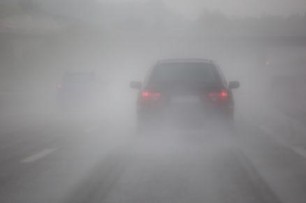
Tips to minimise the risks of driving in fog
There are times when driving becomes challenging due to extreme weather. While you might be a seasoned all-terrain driver, it is still a better choice to park your car and wait for the rough weather to pass. But if you have no other option, then inculcating some of the steps mentioned below will help you prevent accidents on the road.
1. Follow a Slow and Steady pace:
While it is no surprise that speeding is dangerous, one must be extra cautious in foggy conditions. Since most of your vision is blocked due to the dense fog, and you might not know what's ahead of you, it is best to stick to the lower end of your speedometer.
2. Distance between vehicles:
It is always a safer idea to stay a considerable distance away from the vehicle in front of you. As mentioned, due to low visibility, it is difficult to predict what might be ahead. So maintaining the said distance can be a boon in case of sudden breaks.
3. Stick to low beams:
Since visibility is the biggest challenge of driving in fog, low beams are your best shot at being able to see what's right in front of you. High beams would serve no useful purpose as the fog will mask everything ahead of you.
4. Follow the line:
There is always a risk of losing the road during fog. A safety hack you can try is to stick to the lines on the side of the road. This will help you stay within the lane and not lose track of the road.
5. Use wipers:
Using the wipers constantly to ensure a clear vision is a must. Always replace your wipers if the rubber is worn out to avoid the hassle if any situation arises.
6. Keep windows open:
Keeping your windows open is a huge advantage because it gives you an idea of the traffic situation outside and helps you hear other cars and vehicles on the road.
7. Turn signals:
The traffic behind you will depend on your taillight for navigation. Ideally, you should use your turn signals way before you typically would. This will give the vehicles behind you ample time to change directions or hit the brakes.
7. Turn signals:
The traffic behind you will depend on your taillight for navigation. Ideally, you should use your turn signals way before you typically would. This will give the vehicles behind you ample time to change directions or hit the brakes.
8. Parking lights:
If you decide to park your vehicle, do it away from the road and turn on your parking lights so that the traffic coming from either side can see your car and avoid a collision.
These are a few tips that you can follow if you are driving through fog. Your safety is of utmost priority, so avoid driving in fog as much as you can. As a responsible driver, it is your duty to be safe and keep your fellow vehicles safe. Ensure good online motor insurance is always backing you, and your vehicle's safety is not compromised. During odd hours, if your car breaks down, you should be able to bank on your insurance company to protect you against financial burdens.
To learn about online motor insurance, click HERE .
Disclaimer: The information provided above is for illustrative purposes only. To get more details, please refer to policy wordings and prospectus before purchasing a policy.

How walking 10,000 steps can be a life-changing activity
We have heard stories from our grandparents and parents about their struggles and how things were accomplished on foot back in their old days. And as much as we appreciate the ease of living under the present circumstances, we often end up being couch potatoes and getting everything done from the comfort of our homes.
In today's technology-driven world, machines are replacing human efforts. Almost anything and everything can be done with a few clicks, from getting groceries delivered to our doorsteps, a cab waiting at our gates, or booking a movie ticket.
But this ease and convenience come at a cost. Around forty percent of youth face various health issues from obesity and lethargy. Lack of physical exercise, long working hours, and an unhealthy diet have led to severe prolonged health issues.
In this article, we will look at how incorporating fundamental physical activity into our daily lives will yield significant benefits in the future. Let's talk about putting that smartwatch into use and getting ten thousand step counts into your daily routine.
1. It's a start:
Completing ten thousand steps can seem daunting for someone new to fitness. But the goal is to get at least the bare minimum exercise into our otherwise mundane lifestyle.
Start with 5000 steps without making it too overwhelming. An average person takes about three thousand to four thousand steps daily. Putting an effort and taking this up by a thousand steps counts is an achievement you can be proud of. Opt for stairs instead of elevators. Avoid taking your vehicles for everyday grocery needs; you are already a couple of thousand steps ahead.
2. The benefits:
Taking ten thousand steps daily can help you burn about two thousand to three thousand calories per week. This means you lose about half a kilo every week without trying. If you aim for weight loss, you might have to include more cardio into your workout regimen.
But the benefits of ten thousand steps a day are countless.
● Improves blood pressure: Walking promotes better heart health. This means that your heart can pump blood with less effort, ensuring your blood pressure is normal.
● Stable blood sugar levels: The glucose in your body is used up by your muscles when you are physically active. Hence, walking can lower your blood sugar levels over time.
● A healthy heart: Studies show that walking has significant cardiovascular benefits. By making an effort, you are reducing the chances of a heart attack.
● Improves sleep: Moderate exercises can help you in improving your sleep quality significantly. It also helps eliminate daytime drowsiness and reduces adults' need for sleep medications.
● Strengthens your lungs: Increased heart activity directly indicates more oxygen consumption. This strengthens the lungs and other muscles surrounding it.
These are only some of the many benefits you can gain by inculcating healthy habits. Taking care of yourself should not be a compulsion. Instead, it should be a part of your daily life.
An important thing to note here is that ten thousand steps do not promise a miraculous overnight change. The change in your body is gradual, and consistency is the key. Anything in excess can be harmful, so it is best to start slow. As mentioned above, start your way up from 5000 steps daily to 10,000 steps. A gradual increase of about a thousand steps is recommended to avoid injuries and soreness.
Another great way to look out for yourself is by investing in health insurance plans. There are many health insurance plans in India for you to choose from, depending on your needs. Health insurance is a safety net everyone needs to avoid unforeseen medical expenses that one might incur during various health examinations and treatments.
Click HERE to check out health insurance plans in India.
Disclaimer: The information provided above is for illustrative purposes only. To get more details, please refer to policy wordings and prospectus before purchasing a policy.

Tips to reduce high beam glare problem while driving at night
Clear vision is critical for safe driving because it accounts for over 90% of our driving reaction time. Unfortunately, our eyesight changes dramatically at night, and we lose a significant amount of depth perception, colour vision, and peripheral vision. After dusk, the glare of oncoming traffic obstructs our eyesight even more.
As a result of this momentary blindness, accidents are bound to occur. Here, we bring some handy tips to reduce high beam glare problems while driving at night. However, remember that investing in a motor insurance policy is of utmost importance for all vehicle owners as it provides total protection against physical damage or loss due to natural or artificial disasters. Therefore, before stepping out, check your online motor insurance renewal and keep your documents in order.
Now, check these helpful tips to reduce high beam glare problems while driving at night.
1. Anti-glare glasses:
Examine your vision regularly. Ask your optician about no-glare corrective lenses if you wear prescription glasses. Check your glasses for scratches, which can exacerbate glare. Also, exposure to glare while day driving can hamper your vision at night. Wear polarised sunglasses throughout the day to protect your eyes and lower the possibilities of vision impairment while driving at night.
2. Spotless windshields and other glass surfaces:
During the day, a dirty windshield may not be apparent, but it might produce glare at night. Refraction of light and distorted vision on the road can occur due to the glass's streaks. Clean the inside of the windshield, as plastic compounds can accumulate on the glass over time. Remove the filth and oxidised rubber from the edge of the wiper blades with a paper towel and windshield washer fluid to help keep streaks at bay.
3. Position the car mirrors:
The placement of a car's mirrors can help control the intense glare and avoid blind spots to get an accurate judgement of vehicles approaching from both sides. Change the "night" setting on your rearview mirror with the lever on the mirror. Cars' lights will still be visible behind you, but they will be much dimmer.
4. Don't look straight, look right:
Avoid being blinded by high beams that hit you square in the face by looking down the right side of the road. Concentrate on the lane's edge or the painted edge line until the automobile passes. At hilltops, at curves, and crossroads, be mindful of oncoming vehicles' unexpected bursts of light.
5. Take a break:
If you're driving at night for an extended amount of time, take frequent stops. Taking a break relieves fatigue and allows your eyes to recover.
6. Be conscious:
Take basic precautions to avoid blinding other motorists. To begin, make careful use of your high beams. Use your low headlights most of the time and high beams only when essential. Slow down and make sure you have control of your vehicle if another driver uses high beams and fails to dim the lights as you approach.
These tips can assist in driving in the dark without being blinded by other vehicles' headlights. Shield your car with online motor insurance renewal against any such automobile accidents.
Click HERE to do your online motor insurance renewal in easy steps.
Disclaimer: The information provided above is for illustrative purposes only. To get more details, please refer to policy wordings and prospectus before purchasing a policy.

Are you using your private vehicles for commercial purposes? All you need to know
Transportation is one of the essential parts of our day-to-day lives. Whether it is for commercial purposes or personal use, vehicles have turned out like our favourite support. Legally, the law doesn't allow the use of personal vehicles for commercial purposes. However, a recent announcement shows that private car owners can use their vehicles for commercial transport and work purposes under some provisions.
The use of the private vehicle as commercial makes the transport 30% cheaper. You must be wondering whether to use the personal vehicle for commercial use or not? And if yes, then how?
As you read this blog, you will find the best tips to use your vehicle for commercial purposes.
1. Know everything about licensing: Before the government imposed rules on vehicles, there were only two categories of license: transport and non-transport. However, the same license is now allowed to drive two or more different vehicles, considered only if both are LVMs (light motor vehicles). So, before assigning your personal vehicle for work purposes, it is crucial to understand the licensing method.
2. Type of your commercial usage: You may introduce your private vehicle to commercial use in several ways. Converting it into a taxi is the most common method. Apart from taxis, convertible trucks / tempos, school buses, minivans for goods transportation are quite popular. In the case of two-wheelers, the same license is allowed, with the permission / allowance to operate as public transport. You can also use it for exporting or importing goods.
3. Know about taxation/laws: According to the motor vehicle act, vehicles should be given rights and respective licenses according to their class and not the type of vehicle. This rule made it convenient for private vehicles to be used for commercial purposes. As of now, there are no separate endorsement/taxes charged on it.
Initially, you need to follow the conversion process to convert the vehicle into a commercial one. Do it with the valid registration number and by filling a form named "Conversion of Vehicle". You can find all the details about the same on the RTO website. Do some research at your end, or you may even ask expert personnel to make the entire process smooth.
4. Be thorough with the insurance policy: When you run a private vehicle as a commercial, the insurance policy may differ. For example, the usual car insurance may not remain the same when you use your car as a taxi or for other business purposes. You can confirm the details and changes in the car insurance policy from your insurance company.
Also, don't forget to use the appropriate number plate after the conversion of the vehicle.
Just like private vehicles benefit from insurance and other rights, commercial policies also provide the same vigilant coverage. Enforcement of legalities by the authorities has become easy now. Dissolved licensing and flexible transportation rules are encouraging steps for the people who want to convert their vehicles for commercial purposes.
So, if you wish to expand your business or provide your vehicle as a transportation fleet to other companies, these tips can help you understand it better. Remember, holding good car insurance and the appropriate license is the key to driving vehicles' safety and successful conversion.
Click HERE to get the best deals on car insurance.
Disclaimer: The information provided above is for illustrative purposes only. To get more details, please refer to policy wordings and prospectus before purchasing a policy.

Best ways to overcome and correct bad posture and alignment
How often have you heard people complaining about their bad posture? Many of us have been subjected to remarks about our lousy posture. Poor posture has the notion of signifying timidity, insecurity, and lack of confidence. But, it can get more concerning than these behavioural issues.
Improper posture may have adverse long-term health effects. It can result in reduced circulation, consistent back pain, fallen shoulders, and weakness of joints. Are you already observing such issues due to your poor posture? Fret not, as you can fix most posture-related problems with regular exercise, mindful use of gadgets, and occasional hospital visits.
If you are looking for ways to rectify your back alignment, this article will help you regain the correct posture to make you feel confident and healthy again!
1. The correct way to sit and stand:
People often neglect their posture in everyday activities such as standing, sitting, or sleeping. While it is difficult to keep track of your posture constantly, it becomes significantly easy over time. While standing, focus on keeping your legs flat on the floor, shoulders wide apart, and head upward.
This ensures that your calf, back, and neck are relaxed. Tensed muscles can have several long-term implications, such as sprains, torn ligaments, etc. Similarly, keep your back straight, your legs flat on the floor, and your arms resting on the table while sitting.
2. Proper exercises:
Exercises such as bridges, planks, hip stretch, etc., are easy and effective choices to realign your postural alignment. A trainer or expert can guide you to practice the correct postures.
Maintaining the wrong form while exercising can lead to muscle soreness. Be careful and avoid the issue from becoming more problematic for you.
3. Consult a chiropractor:
A chiropractor is an expert trained to help you with improper alignment, knots, and other ailments. People are subjected to excessive strains due to long working hours or intense workouts. These strains can severely affect the body's functioning and daily activities. A chiropractor exercises spinal manipulations to soothe affected areas. This helps in relaxing the muscles and avoiding any serious injuries.
4. Identifying the signs:
Headaches, joint pains, restricted motion, and shooting pains indicate incorrect posture. Sometimes, these issues can result from a particular activity done during the day, such as lifting heavy weights, sitting for long hours, uncomfortable travel, etc.
Stretching and using hot water bags in these situations can help relieve the soreness. If the pain persists, it is time to visit your doctor.
5. Movement is necessary:
Sitting in one place continuously for hours can severely affect the lower back and shoulder. Make sure to leave your seat every hour to give your body some movement. Stretching your legs, arms, and back also proves effective in such situations.
6. Invest in posture-friendly equipment:
Everything starting from the mattress we sleep in, the shoes we wear, the chair, the car seats, etc., heavily determines a significant part of our postural alignment.
Hence, it is vital to choose these things after careful consideration. Buy shoes with good cushioning to avoid straining your heels and calf muscles. Ensure to flip your mattress every six months, and switch it up for a new one every six to eight years. If you feel discomfort in your office chair, notify the people in charge or invest in a comfortable cushion.
These are a few ways to overcome lousy posture and misalignment. Regular exercising, good eating habits, and ample sleep are a few things that you should never compromise on. You must undergo routine checkups to recognise any latent issues your body might face and fix them soon.
Getting health insurance is an intelligent way to avoid extra expenses you might incur during treatments and checkups. Do not forget to look into the best health insurance in India for further assistance with your insurance needs. It can be the best aid for you during emergencies.
Click HERE to know more about the best health insurance in India.
Disclaimer: The information provided above is for illustrative purposes only. To get more details, please refer to policy wordings and prospectus before purchasing a policy.
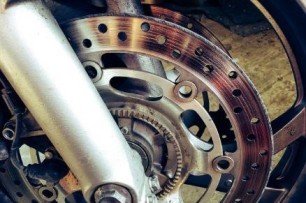
Understand the importance of ABS in bikes and how it works
Today, it's no longer necessary to use drum brakes on commuter bikes. As technology has advanced, they've become unnecessary for the two-wheelers. Drum brakes operate by squeezing shoes against a lining in the drum itself; this causes friction and stops your bike. They become less effective as they heat up, so they're not ideal for biking over long distances.
To stay safe while biking, it's essential to have a bike with an anti-lock braking system. If your bike doesn't have ABS, you're putting yourself in danger. With cars, it's been a safety feature for years. And now, bike riders can enjoy the security of it too. However, safety is incomplete without ideal two-wheeler insurance that provides the best damage cover. Make the buying process hassle-free by opting for two-wheeler insurance online. Browse through numerous options, and then buy one that fits your needs.
What is ABS, and how does it work?
An anti-locking braking system (ABS) is a system that helps you avoid skidding on slippery surfaces, with its ability to stop wheels from locking up. It's a great way to add safety to your bike journeys.
ABS is the latest generation of motorcycle braking systems. It can avoid the sudden locking of wheels in all types of road conditions and terrains. ABS is a safety system that forces fluid through a circuit of valves and pipes to prevent the wheel from locking up while braking in hazardous conditions.
Importance of ABS in Bikes
Your car's brakes should always be at peak performance, whether you have ABS or not. There are several benefits of having ABS, the main ones being:
• The advanced traction control technology is effective because it improves traction on the road. That's why you can now find it in new auto models. It also helps you avoid slipping and sliding.
• Anti-lock braking systems are essential for slowing down in every type of weather. For example, these systems are crucial when the road is wet after a rainstorm. They prevent wheel lockups by pumping brake fluid to the brakes to control the speed of your bike. These systems can save lives because they allow riders to stay in control of their bikes.
• An excellent anti-lock braking system will increase the resale value of your bike. However, remember that ABS is standard on most modern cars or bikes, so not having one could lower the potential resale value of the vehicle.
• Anti-lock brakes are an investment that can reduce the risk of accidents. So, if you have ABS installed on your vehicle, you might get better insurance rates. Check your 2 wheeler insurance online policy for your bike with ABS.
The government made the Anti-Lock Braking System mandatory for all four and two-wheelers manufactured in the country. This is an important step towards improving road safety for commuters and lowering road accidents. With the Anti-Lock Braking System, your safety and riding experience certainly gains significance.
Click HERE to buy the best 2 wheeler insurance online.
Disclaimer: The information provided above is for illustrative purposes only. To get more details, please refer to policy wordings and prospectus before purchasing a policy.

21/90 magical rule to build a routine and your dream lifestyle
Do you want to break a bad habit? You probably should. According to one research, nearly 40% of the "decisions" we make aren't decisions. It's a matter of habit. We do what we've always done, making us less productive, efficient, healthy and fit. In other words, less in everything than we could be.
So, what can be done to change an old bad habit and adopt a better one? The 21/90 rule helps you to overcome that. The 21/90 formula is a simple approach that can help you reach your predetermined goals if followed and challenged for a few days. According to the method, if you can stick to a plan for 21 days, it becomes a habit, and if you stick to it for another 69 days or a total of 90 days, it becomes a lifestyle.
In this article, we share the tips that will help you get started with this method and stick to it.
1. The first stage is to have a clear goal: You will not be able to see where you're going in life unless you have clear goals. Identify your purpose, define your vision and translate your objectives into attainable benchmarks. You've almost assured success if you have a clear milestone to achieve.
2. Have a strategy: Every new habit requires a plan. It assists you in achieving your objectives. Create a timeline of activities to follow. Decide how you'll reward yourself at significant milestones, such as the 21st day, 69th day or 90th day in this 21/90 approach.
3. Resist temptations: The best method to create a new habit is to eliminate everything that would hold you back or tempt you to return to your old habits. Rebuilding your surroundings will help you distance yourself from your old habits. For example, don't stack up on snacks in your house if you're trying to lose weight or uninstall the social media apps from your phone if you're trying to cut on your screen time.
4. Avoid distractions and be disciplined: Theodore Roosevelt's words, and we quote, "With self-discipline, almost anything is possible". Self-discipline is tough to attain since it demands a fight with oneself to make the best decision. But if you master the art of self-discipline, nothing can stop you from being your best self. You can carve out a schedule or reminder to pay your utility bills or online health insurance payment on time if you have a habit of missing the due date.
5. Eat, sleep and repeat: It's time to restart what you've completed in 21 days and help you achieve your first objective. Set a brand new goal for yourself, and with your new habits, you'll be on your way to 90 days and a lasting lifestyle change in no time.
Life is delightful when you enjoy what you do. When you begin your 21 to 90 days journey for a lifestyle change, don't forget to enjoy the process. It will be more accessible, and you'll reach your milestone in no time.
Another effective way to cultivate new habits is to tie them to the existing ones. So, if you are already getting up early for some work, add regular exercising or a morning walk with it. Spending time to maintain good health, managing routine medical check-ups, owning a robust health insurance plan and renewing your online health insurance is important for overcoming any health-related bad habits. So, start small and keep adding new habits with this 21/90 magical rule!
Click HERE to get the best health insurance online.
Disclaimer: The information provided above is for illustrative purposes only. To get more details, please refer to policy wordings and prospectus before purchasing a policy.
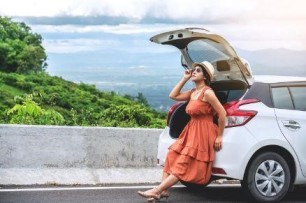
Choosing the right itinerary for your road trip to the mountains
Mountains are the perfect getaway to spend a few moments in peace and the serenity of nature. The feeling of being high up in the sky amid the clouds and looking at the stunning view is something no traveller wants to miss.
While a road trip to the mountains can be one of the most exciting things to experience, it is a fact that without the proper itinerary, the trip will lose its essence. The unpreparedness will lead to stress and confusion. The following blog gives you information that will help you choose the right itinerary for an exciting mountain trip.
1. Planning every step of the way:
Highlight the areas you want to visit along the way and research the most scenic routes to get there. In the mountains, it’s often about the journey, not the destination. Plan a detailed itinerary, including the dates on which you’ll reach each place, midway stops, and the places you’ll eat at throughout the trip.
Also, marking the highway petrol pumps is essential to avoid the stranded situation in the middle of nowhere. Although the plan should be meticulous, be open to deviating from it to experience something new.
2. Packing the right gear:
Packing the right gear can be a make or break of a trip. Place comfort over style, and make it a priority to pack clothes according to the weather. It can go from extremely cold to hot in a matter of a few days in the mountains, so make sure to get clothes suited to both.
3. Driving the right kind of car:
Mountain roads are notoriously treacherous. Steep and slippery roads are a given, and navigating these roads is a skill. Not all cars are made for such roads, and it is of utmost importance to drive a car that can stay intact on these roads.
4. Food and drinks:
Snacking and road trips have always gone hand in hand. Finding your favourite snack in the middle of a small mountain village is not always possible. Stay as hydrated as possible, and try to stay away from food that might upset your stomach.
5. Get coverage for every circumstance:
Road trips to the mountains came with a lot of risks. It is common to be stranded on mountain passes, waiting for help. It is best to ensure that your car insurance covers the vehicle towed a certain distance and repair cost if something unforeseen happens.
6. Don’t bite off more than you can chew:
It’s never a good idea to overstretch yourself on a trip, especially as dangerous as travelling to the mountains. Do ample research about common health issues faced when going to higher altitudes like heart palpitations and dizziness. Pack appropriate medication in your first aid kit to avoid health scares.
Overexerting yourself can also lead to rash driving and, ultimately, accidents. It’s best to be insured against any hefty medical bills you might incur. Be sure to stay updated on all the documents like car insurance.
A road trip to the mountains can be a therapeutic activity after the constant grind of city life. Breathing good clean air, getting some exercise and the view being a feast on eyes are just a few reasons why city people these days want to retire to a cottage in the mountains and spend their lives there.
However, travelling on unpaved, steep roads of the mountains can be challenging for your vehicle. The little off-roading you do for fun might come with a high cost of damage to your car. It is advisable to purchase comprehensive car insurance or renew if you already have one before your road trip.
Click HERE to know more about different car insurance plans.
Disclaimer: The information provided above is for illustrative purposes only. To get more details, please refer to policy wordings and prospectus before purchasing a policy.

Know about these interesting tips to tackle dry skin problems
Taking care of your skin is probably not the most straightforward task, but it certainly is unskippable. Our skin faces a lot of damage almost daily. The effects of weather conditions, settling of dust on the skin, problems due to sweating, and tanning are common issues that our skin undergoes.
Skincare should not be neglected to maintain healthy and glowing skin. And with the winter season here, all the people with dry skin live their nightmare of flaky and dull skin. But fret not.
We have listed a few pocket-friendly tips and tricks to maintain the healthy relationship you have always wanted with your skin.
1. Cleansing and Toning:
Follow these simple steps to help you remove dirt, impurities, and pollution from your skin, balances your pH level, tighten pores, and nourish your skin to its core. For cleansing, you can mix honey with a few drops of milk and apply it gently to your skin. For toners, you can use chamomile oil and rose water and spritz it onto the dry areas of your face.
2. Moisturising:
While this is a no-brainer, moisturiser is your best friend when it comes to dry skin. Although, you must apply your moisturiser right after your shower and after washing your face. Moisturisers help you seal in the moisture present on your damp skin, thus retaining the moisture content in your skin. You can even use shea butter and jojoba oil and apply them to your skin after you are done with cleansing and toning.
3. Say yes to warm showers:
A hot shower probably feels like the best thing at the end of a tiring day, but this is not a good idea for the health of your skin. The hot water can strip your body off of its natural oils, which is essential to help keep your skin moisturised and nourished naturally. So instead of steaming hot showers, opt for lukewarm showers. Your skin will thank you later.
4. Hyaluronic acid:
A new favourite of dermatologists across the globe is this magic ingredient. Hyaluronic acid promotes supple and healthy skin. It uses the moisture from the atmosphere and traps it under the skin keeping the skin well hydrated. Being humectant by nature, hyaluronic acid can hold more water than its size, almost ten times its size. Add this magic ingredient to your daily skincare routine and watch the positive results for yourself.
5. Facial oils:
Facial oils are also another absolute must-have when it comes to taking care of your dry skin. These are the night skincare specialists because it gives the oil the entire night to work on your skin so that you wake up glowing.
6. Contact your dermatologist:
All the steps mentioned above are primary care that you can provide to help your skin retain moisture. If, however, your skin is acting out and is going through an extreme case of dryness and dullness, it is a good idea to visit a dermatologist. Your dermatologist would know precisely what your skin requires and help you choose the best suitable remedy for your skincare.
Are you wondering what more you can do for yourself? How about checking out some online health insurance offers if you plan to get a skin treatment? Consider getting your online health insurance before you pay a visit to the hospital to avoid unnecessary expenses and receive the best financial aid.
Apart from these tips, you need to consume at least 4 litres of water daily and focus on your appetite. These factors also contribute to the fitness of your skin. Start incorporating these tips and watch your skin gain its glow and charm back.
Click HERE to know more about online health insurance!
Disclaimer: The information provided above is for illustrative purposes only. To get more details, please refer to policy wordings and prospectus before purchasing a policy.

Seven effective ways to sharpen your memory with increasing age
Memory loss is a prevalent problem among the elderly and a usual complaint from their caretakers. The good news is there are straightforward strategies to boost memory that aren't costly or tedious. Just as exercise helps your physical health, brain exercises develop your mind, enhancing your memory and reasoning abilities. Here are some measures you may take to retain and even upgrade memory.
Everyone fails to remember things periodically. Yet, loss of memory is not something to be neglected. However, there are no assurances for avoiding memory loss or dementia, but some activities could be surprisingly beneficial. Consider these seven easy strategies to strengthen your memory and know when to seek treatment for Alzheimer's disease.
1. Beauty sleep:
Sleep causes brain changes that help to cement memories. It also improves brain cell connections and aids in transmitting information from short to long-term memory. This implies that fresh memories made by older people are more likely to stick with them. Sound sleep can even help elevate mood and nourish the brain to perform to the best of its ability.
2. Maintain a social life:
Studies have demonstrated that social interaction is critical for the elderly's mental health and remembrance. Enjoying time with family and friends and attending activities may aid in the maintenance and improvement of cognitive processes.
3. Reduced sitting and increased movement:
According to several studies, seniors who participate in physical activities receive significantly greater oxygen to the brain. In addition, there is an increase in blood flow to regions of the brain linked with increased memory, which results in changes in mental health to fruitful levels. Increasing age demands constant physical movement to build an active lifestyle.
4. Better meals:
Modifying a veteran's nutrition to include foods rich in protein and unsaturated fats, such as fruits, vegetables, nuts, etc., can lower cholesterol levels. This reduces the risk of memory problems and heart attacks by preventing blood vessels from being blocked. Proper diet plays a crucial role in maintaining overall health and ensuring physical well-being.
5. Take a sensory exam:
Although this may seem clinical and unusual, sensory testing is a friendly approach to ensure that the brain is supple and robust. A sensory test creates new neural connections in the brain while also replenishing existing ones.
6. Carry out brain workout:
Learning new abilities such as playing an instrument, engaging in a pastime that requires hand-eye coordination, conducting memory exercises, and even doing arithmetic in your mind, has been shown to increase cognitive function and recollection.
7. Discover a new interest:
Numerous institutions and senior centres provide interesting, low-cost talks and workshops for seniors. Whether it's learning a new cuisine or honing your computer abilities, continuous education is a sure method to remain sharp.
Consult a doctor if you're concerned about your parents' memory loss, which can interfere with their ability to accomplish typical daily tasks. They will probably perform a medical examination and cognition and problem-solving abilities tests. Having insurance always comes in handy. Look for the best health insurance in India for parents and invest in one to make their life after retirement healthy.
Get the best health insurance in India for parents HERE.
Disclaimer: The information provided above is for illustrative purposes only. To get more details, please refer to policy wordings and prospectus before purchasing a policy.
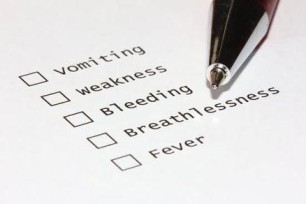
Six signs of declining health conditions in aging adults
We often tend to take our health for granted at a young age. This is because in its young days, our body maintains stamina even if we may not properly care for it. But as we approach middle age, we realise how the stress and hustle of daily life make us neglect our health.
As we continue carrying the stress and burden of responsibilities on our shoulders, we forget that neglecting our health can be detrimental. It can be challenging to pay attention and recognise an illness before it has already done harm. Here are a few signs to look out for that indicate declining health conditions in aging adults.
1. Insomnia:
Adults deal with loads of responsibilities and stress daily. As hard as they work during the day, it can become just as hard to get a good night's sleep. Insomnia or sleepless nights can reflect a person's mental or physical stress, change in hormones, or fluctuating nutritional values that should be looked into before they worsen.
2. Deteriorating nutrition:
We are aware of how vital undertaking regular blood check-ups is. Adults should regularly get blood check-ups since they do not pay much attention to acquiring a nutritious diet. Deteriorating nutrition can cause a fluctuation in the body's levels of vitamins and minerals, which can lead to several health issues like weakness, loss of stamina and energy, etc.
3. Fragile bones:
As we grow older, our bones go through a lot of wear and tear. The ability to recover from broken bones and fractures drastically reduces for adults as they have lower bone density than children. Regular joint pain and fragile bones can indicate the onset of chronic conditions like arthritis, osteoporosis, etc.
4. Increasing comorbidities:
Comorbidities such as hypertension, diabetes, high cholesterol start to affect adults as they approach their late 40s. Securing a health insurance policy for family can help you ensure family safety in case of emergencies. However, maintaining your health by exercising, walking, taking vitamin supplements, etc., is essential to control these comorbidities.
5. Memory loss:
Brain function may be affected as we grow older and forget a few menial things. However, it becomes concerning when adults start to forget essential information like directions, identity, or recipes. Memory loss can indicate severe health conditions like dementia and Alzheimer's. Therefore, it is better to trace these early enough to treat these conditions right.
6. Digestion issues:
The most common thing that aging adults deal with is gut-health issues. Digestion can be affected by lifestyle choices, non-nutritional eating habits, genetic problems, etc. Chronic conditions like irritable bowel syndrome, diverticulitis, hemorrhoids, and gallstones usually begin when digestive issues are not resolved in time.
These are a few signs that point towards a deterioration in an adult's health conditions. While many individuals understand the importance of investing in health insurance for family and themselves, some face an uncertain future without it. A reliable health insurance policy for family acts as a backup plan that secures the health and safety of our loved ones, especially after entering into a specific age.
Click HERE to understand more about the different health insurance plans for you and your family.
Disclaimer: The information provided above is for illustrative purposes only. To get more details, please refer to policy wordings and prospectus before purchasing a policy.
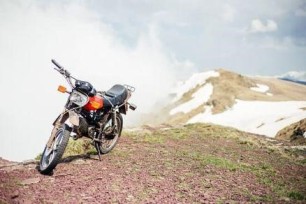
Winter motorbike tips: What all you need to know for cold weather riding
Morning chill, dense fog, and cold weather are the signs of winter's arrival. Even visualizing yourself riding through the empty roads in freezing weather can shiver you with cold. Riding a motorcycle in winter can be challenging. Therefore, proper winter gear, clothing, and some tips are essential to consider while planning cold weather riding.
In this space, we've shared our best recommendations to make your winter motorcycle riding plan fool proof.
1. Warm yourself up; feel the heat:
Layering! Wind-blocking is simply the formula. Before you even think about your bike jacket, you need to put some layers of clothing barriers in place right near to your skin. Here's a brief guide.
• The base layer – a warm t-shirt
• A hoodie or fleece
• Motorcycle jackets – leathers aren't particularly appropriate for the cold. Instead, choose a warm, waterproof textile alternative
• A neck warmer or snood – especially if you're riding on the highway
• And finally, suitable warm gloves
• Layering your torso isn't enough. Invest in winter boots, layer-up socks, and pants
2. Charge up your batteries; don’t let them chill:
The chilled months can be difficult for your bike's battery since the colder temperature delay its chemical processes, causing it to cease operating. To keep it charged, you must ride your bike regularly. Utilizing a trickle charger to keep the battery completely charged can also help.
3. Ensure visibility; keep your vision clear as your enthusiasm:
Install a pin-lock and wipe your helmet visor with running water to keep it clear and fog-free. Don't go scrubbing since the salt and grime will damage your visor and cause it to become foggy.
4. Helmet; not for fashion but protection:
You should consider purchasing a winter-specific helmet with reduced front-end ventilation. And a visor that doesn't allow fog to settle in. Only buy a helmet that has ISI certification.
5. Clean your bike; to have consistent running:
Cleaning your bike in winter can be difficult, especially if you know you'll have to do it regularly. But hear us out, cleaning off the road salt can make a significant difference in the start of corrosion. You can use a protective lubricant and anti-corrosion spray to avoid components from melting into a puddle. It will also make cleaning the bike faster and easier. Winters invite unexpected damages and repair works to your bike. Next time when you buy warm clothes to be winter-ready, consider checking your bike maintenance and bike insurance policy to ensure your preparedness against the weather.
6. Monitor the weather; be the forecast expert:
Following the weather forecast is a must for every motorcyclist, especially during the winter months. By checking the weather online, you can prepare for a foggy day or lovely day accordingly.
Whether you’re planning for a long ride or a short trip to your neighbourhood store, cautious riding is essential to help navigate cold and wet roads. The freezing weather outside determines more than you think; when to slow down, be smooth, maintain enough distance for braking, following essential tips and ensure bike insurance to cover you for any eventuality. So check back regularly the above tips for comfortable riding and keep you protected on the bike throughout winter.
Click HERE to know about the best bike insurance plans before your next bike ride.
Disclaimer: The information provided above is for illustrative purposes only. To get more details, please refer to policy wordings and prospectus before purchasing a policy.

Implement these six tips for the maintenance of a car you don't drive often
We all know how much effort we have to put in to maintain a car that we drive daily. Now imagine the maintenance needed for one we do not drive that often. Of course, it is not essential to take care of an idle standing car in your garage, but it is vital to keep its maintenance top-notch irrespective of driving.
To help you get better at maintaining an idle car, we have mentioned some tips below that you can follow without going out of your way!
1. Change the oil frequently:
The engine is the heart of any vehicle. So even if you are not driving the vehicle, you must ensure that you are taking care of the engine and that the engine oil is changed frequently. This keeps the engine lubricated and improves the life of your vehicle. So you do not have to worry about its maintenance if you decide to use it in the future. Moreover, the engine is the most expensive part, so you might have to pay a hefty sum if it is damaged.
2. Go for a short drive:
When the manufacturers make a car, they keep it running throughout. So your vehicle's engine oil often circulates to the different parts of your engine and provides lubrication. When you leave your car idle for a long time, the engine parts tend to lose their lubrication and face damage. Also, if it is not used for a long time, your vehicle's battery will drain eventually.
3. Clean your car:
If you know that your vehicle will be idle for a long time without being touched, then you must have a routine to clean its interior and exterior regularly. You can cover your vehicle with a car body cover; this will protect it from all the dust, leaves, moisture that otherwise can ruin its texture. A car's paint undergoes severe damage due to factors like moisture, weather or climatic conditions, substance damage, etc. Schedule a bubble bath for your less operational vehicle at least once every month to maintain the glaze of its exterior.
4. Check for rodents and pests:
An idle car is the perfect breeding home for pests and rodents. The vehicle being untouched will make it an ideal environment for infestation. Rodents can put down the electrical circuits, seat cushions, wires and severely damage the interiors. All of these things will make your car of no use later on. So while cleaning your vehicle, make sure that you are also getting it checked for rodents and pests to keep them away.
5. Disconnect the batteries:
While your car is idle, it is best to unplug the battery terminals to avoid corrosion. Ensure that you wear gloves and keep the ignition turned off. While unplugging the battery terminals, you must unplug the negative one first and then the positive one.
6. Maintain your car insurance renewal:
Keeping your vehicle idle and unused will land you in trouble later. These problems can be anything from the engine to corrosion of parts too. So to ensure that you do not have to pay for the damages, you must also ensure your car insurance renewal.
Car maintenance can be challenging and time-consuming, but your work will be less complicated with the tips mentioned above. They will ensure your car doesn't get damaged or face any trouble. Whether you are operating it or not, your car is your responsibility, and looking after its maintenance should be your priority as an owner.
Click HERE to buy the best car insurance plan.
Disclaimer: The information provided above is for illustrative purposes only. To get more details, please refer to policy wordings and prospectus before purchasing a policy.


